Click on the button to load the content from www.googletagmanager.com.
Load content

- Tailored Vacation Planner
- Cabin Yacht Charter
- Family Sailing Holidays
- Romantic Sailing Vacations For Couples
- Sailing with friends
- Greece all inclusive yacht charter
- Croatia all inclusive yacht charter
- Food & Wine Routes
- Yacht search
- Luxury sailing

Boat vs. Ship vs Yacht: What’s the Difference?
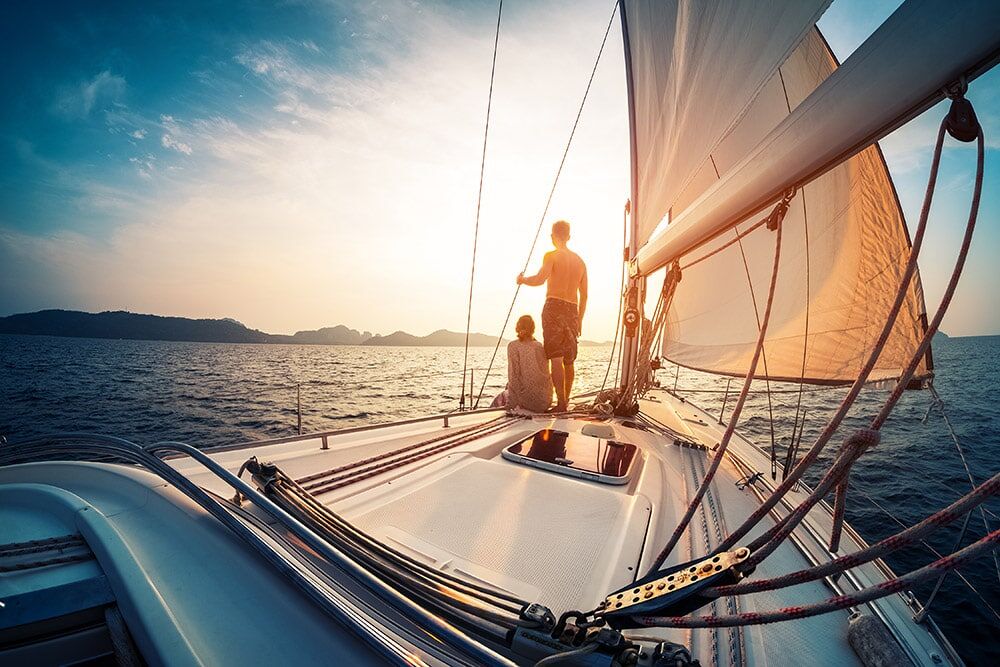
Language is a tricky thing, and picking out the differences between similar terms can be confusing. This is especially true when some of the definitions overlap. This is the case with the case of boat vs. ship vs. yacht . What’s the difference? We know in our gut that there are differences between these three seafaring vessels, but unless you’re a harbor master do you really know what counts as what?
Let’s get into some definitions, and we’re going to start with the easiest to explain: What is a yacht? What is a ship? And what is a boat?
Yacht vs. Ship vs. Boat
What is a yacht.
A yacht, I think everyone would agree, is fancier than a ship or a boat. “Yacht” infers some amount of luxury , and definitely recreation. There’s also something to be said about size. A yacht tends to be anywhere between 35 feet up to 160 feet. And some yachts, known as superyachts, go even beyond that. (Jeff Bezos just built a 417 foot yacht, but that’s really breaking yacht records.)
Because of the size, yachts tend to operate in larger bodies of water–generally the ocean. Yachts are able to handle rougher ocean waves, and they are also equipped with more advanced navigation and guidance instruments than smaller boats. Likewise, a yacht tends to have a full crew to help with the navigation, engineering, repairs, as well as having stewards that serve the yacht’s guests. This can be anywhere from a crew of four or five up to a crew of a few dozen on large yachts.
One interesting thing to note is that outside of the United States, a yacht refers to a sailboat , and a motorized yacht is called a “motor yacht”.
So, is a yacht a boat? Yes, technically a yacht is a boat. But a yacht is a very specific kind of boat.
Want to hop aboard?
Book your dream sailing vacation in top sailing destinations!
- Explore your charter options
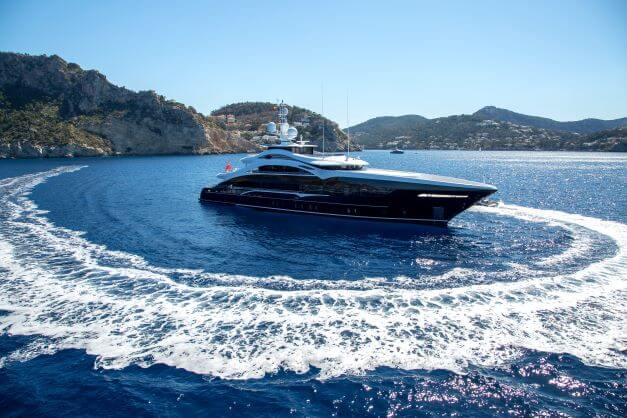
What is a Ship?
The term ship is most commonly associated with a very large boat, and something that is not as fancy as a yacht (one exception is that cruise ships can still be very fancy, but are referred to as ships because of their size and power.)
Ships are generally so large that they would never be found in a lake, with some exceptions for the Great Lakes, and are made for navigating the high seas of the open ocean. An ship can refer to a cruise ship, a naval ship, a tanker, a container ship, and many other commercial vessels.
Ships tend to have advanced navigation and technology, but much more advanced than that of a yacht due to the size, the speed, and the routes that a ship will take. They are meant to be traversing the open ocean for very long periods of time, from one continent to the next, while a yacht may only rarely set across the ocean and most often stays somewhat near land.
A ship will also have a much larger crew than a yacht or a boat. Ships are typically so large that they need not only one trained navigator but a set of navigators, plus an entire engineering team, and includes many more positions.
Finally, a ship is meant to carry things. This may be passengers, yes (in reference to cruise ships and some navy ships) but most ships are for carrying cargo–or even carrying equipment to do work on other ships including repair work or refueling.
What is a Boat?
Well, a boat is harder to define, because a yacht is technically a boat, and a ship is technically a boat. But when people refer to boats, they are almost always referring to something smaller than either a yacht or a ship. Boats may be motorized, like a speed boat, or they may sail, or they may be man-powered, like a rowboat or a kayak. Really, anything up to and including a liferaft, can be called a boat.
(As a side note that will just muddy the waters even further, submarine captains are adamant that their subs are boats. They are not ships.)
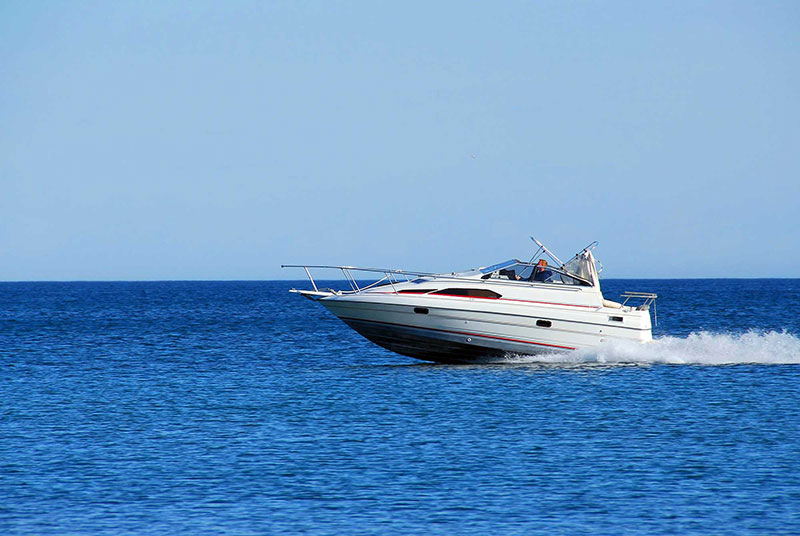
So, Boat vs. Ship Vs. Yacht?
Ultimately it comes down to this: all three of them are boats, but yachts are fancier, larger, and used for recreation, and ships are even larger, used commercially or by the navy, and are meant to cross oceans. The dividing line is sometimes thin, but generally speaking, when it comes to boats vs. ships.vs. yachts you can go by the adage “ I know it when I see it .”
Share article:
Have a question.
We have answers to your questions. So don’t hesitate to get in touch with our team today!
- GET MORE INFO
Feel free to ask us anything. All hands on deck. Let's sail
Thank you for sending us an inquiry, thank you so much for your enquiry.
Yacht vs. Ship: What's the Difference?
Key Differences
Comparison chart, primary use, crew requirements, design focus, yacht and ship definitions, what is a yacht primarily used for, why are ships essential for global trade, how does a ship differ from a yacht in terms of size, is every luxury boat considered a yacht, how are ships powered, can a ship be used for leisure, is yacht racing a popular sport, how are ships navigated, can yachts cross oceans like ships, what type of crew does a yacht require, why are ships crucial for naval defense, how is the speed of yachts compared to ships, are ships and yachts subject to maritime laws, do yachts have classifications, what's the largest type of yacht, can ships be privately owned like yachts, how long can ships stay at sea, what amenities can be found on luxury yachts, can yachts be chartered, how are ships built to withstand rough seas.

Trending Comparisons

Popular Comparisons

New Comparisons

- The Inventory
- Beyond Cars

When Is a Ship a Yacht, and When Is It Not?
The difference between the two broad categories is determined by one key factor..
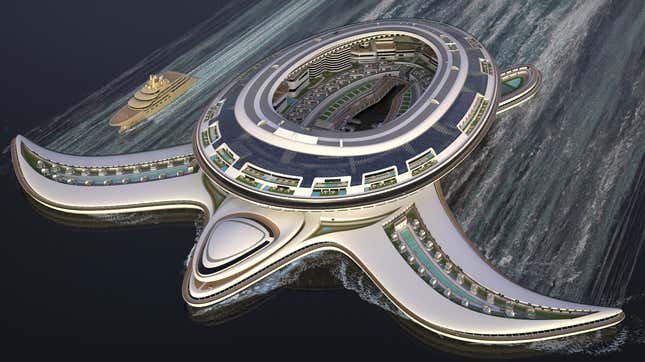
Yachts have been in the news a lot more frequently in recent years. There have been stories like when a Dutch yacht builder requested to temporarily dismantle an iconic bridge in Rotterdam to get a 417-foot-long sailing yacht commissioned by Jeff Bezos out to sea, or when authorities around the world seized the yachts of Russian oligarchs in the wake of Russia’s invasion of Ukraine. Usually, the most notable yachts have the prefixes super-, mega- and even giga- attached to convey their truly enormous sizes relative to most other privately-owned vessels.
Suggested Reading
As a result, ‘yacht’ as a term has basically become meaningless just by the sheer proliferation of private ships in recent years that defy all potential superlatives. It’s like when you say a word so often that it loses all its meaning. Why are there so many more huge luxury maritime vessels in the world? Rising levels of global wealth inequality? Technical innovation? I don’t know. The Pangeos is the latest planned monument to ostentatious wealth. The 1970-foot-long turtle-shaped ship is the brainchild of Italian designer Pierpaolo Lazzarini. However, this self-declared terayacht is not a yacht by definition.
Related Content
The only distinction between a yacht and a ship is simple: It is the vessel’s intended purpose. When you enter a foreign country, every customs agent will ask, “What is the purpose of your trip, business or pleasure?” It is the same when categorizing large water vehicles. The sole purpose of a yacht is recreation. If the craft has any other intended purpose, such as naval warfare or maritime commerce, it’s a ship. The U.S.S. Gerald R. Ford , a nuclear-powered U.S. Navy aircraft carrier, and the Carnival Celebration, a 5,280-passenger Carnival cruise ship , are both ships.
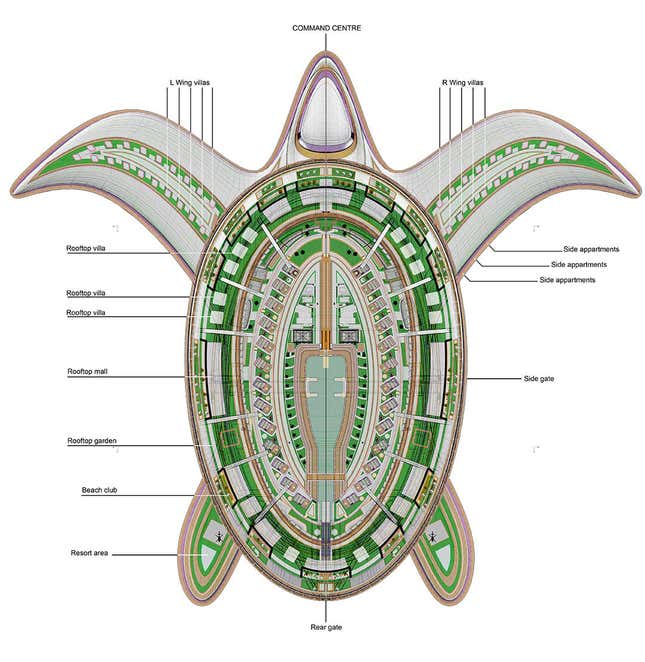
The plans for the Pangeos might feature private vacation villas and apartments. However, the absurd craft would also include also shopping malls and a hotel resort, making the Pangeos a ship. The Pangeos, named after the prehistoric supercontinent of Pangea, will likely never be built due to the ship’s $8 billion price tag.
Besides ship and yacht, boat is another commonly used term. The definition of a boat is much more vague and open to interpretation. Boats tend to be small personal craft and only carry a few people. Though, it’s common for sailors to refer to vessels of any size or purpose as a boat.
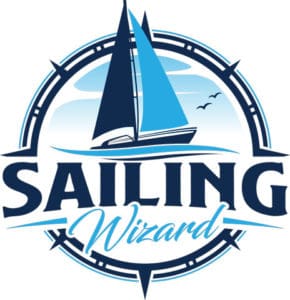
What’s the Difference Between a Boat, Yacht & Ship?
Whether you are a brand new sailor or just wanting to brush up on some terms, it is essential to know what to call a particular watercraft if you’re going to fit in while you’re at the docks or out on the water. There are many nuances and subtle differences between water vessel types, but below are some of the main differences.
In general, yachts are either sailing or motor vessels used for pleasure. Yachts are often luxurious and equipped with an overnight cabin. Boats can be either propelled sail or a motor and come in varying sizes. On the other hand, ships are usually motor-powered and much larger than boats.
Some of the differences between watercraft types can be a little fuzzy, but once you grasp the main differences between them, it becomes relatively easy to tell them apart. If you have no previous knowledge of watercraft, you are likely very confused about what defines a yacht, boat, and ship, so I’ll try to clarify any confusion you might have in the next few sections.
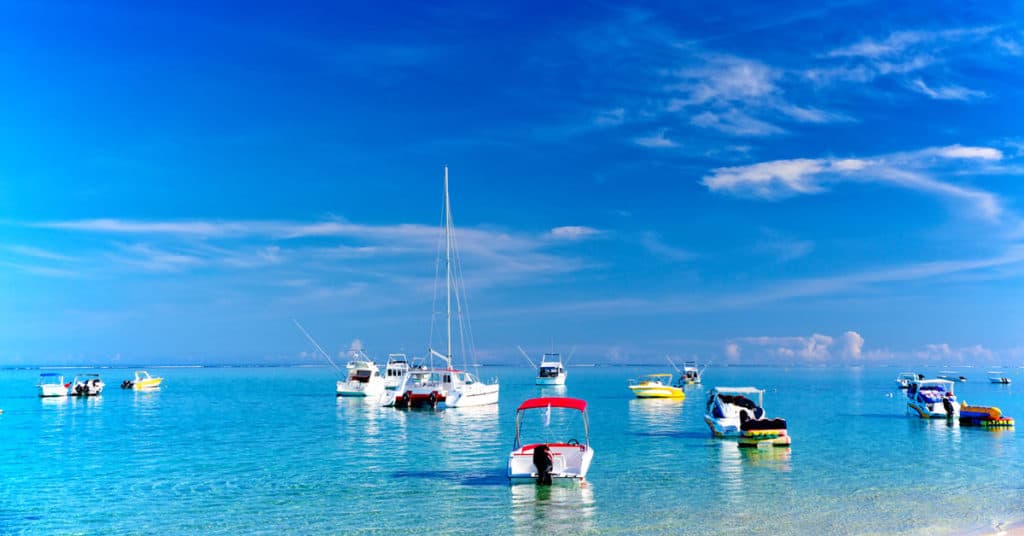
Similarities and Differences Between Boats, Yachts, and Ships
The many bodies of water all over the world are home to an extensive collection of different watercraft. There are so many shapes and sizes that they come in that it is nearly impossible to fit every single one into a specific classification.
However, in the following table, I did my best to loosely define ships, yachts, and boats so that it is easy to see the differences between the types of watercraft.
| Less than 197ft (60m) (usually ~25ft) | $15000 – $100,000+ | Pleasure, Residential, or Commercial | Motor, Wind, or Man Powered | |
| Greater than 33ft | $250,000 – $50,000,000+ | Pleasure | Motor or Wind Powered | |
| Greater than 197ft | $10,000,000 – $500,000,000+ | Pleasure, Residential, or Commercial | Motor Powered (Ancient Ships Used Wind or Man Power) |
As I mentioned earlier, it is impossible to fit EVERY SINGLE water vessel into a particular category, so there are tons of exceptions out there. In addition to the exceptions, different organizations, laws, and people classify types of boats slightly differently.
There is no universally accepted definition for ships, boats, and yachts, but instead many different sets of rules and regulations. In this article, I have tried my best to use the most commonly accepted definitions for each watercraft type.
Now that we’ve gone over some of the main differences and similarities between boats, ships, and yachts, let’s take a look at each type of vessel individually and look at their most prominent characteristics and attributes.
What Exactly is a Boat?
Boats come in a vast array of sizes and shapes. To many people, the term “boat” simply refers to nearly any watercraft, but there are actually a few restrictions and defining characteristics that all boats have. So let’s just get right into it and take a quick look at what exactly qualifies a vessel as a boat.
Overall Size of Boats
As I said before, there is a massive catalog of different types of boats, and they come in a variety of sizes. There are huge boats that hold lots of cargo or people, and then there are smaller ones that barely can stay afloat with a single person on board.
Typically, boats are defined as watercraft that are less than 197 feet long. However, most boats you are likely to encounter on the water are usually around 30 feet long.
General Price Range of Boats
Again, it is hard to accurately give a price range for all boats because they come in so many different sizes, styles, and types, but most modern boats seem to fall in the $1,500 to $100,000 range.
Small Jon boats can cost even less than $1,500, while large sailboats and houseboats can cost well above $100,000.
Most Common Uses of Boats
Boats are used all over the world for a variety of different reasons and to do many tasks. Many types of boats serve a wide range of uses, but most are primarily used as a residence, for pleasure, or commercially.
Some of the most popular types of boats, such as sailboats, bowriders, and dinghies, are commonly used for enjoyment, fishing, racing, or other pleasurable activities. There are also many types of houseboats used as residences and commercial boats used for chartering or moving goods or people.
Propulsion Method of Boats
Due to the wide variety of boats, you are likely to find boats propelled by almost every propulsion method imaginable. Some of the more popular propulsion methods for boats to use are man-power, wind power, and motor power.
Boats on the smaller end often use the power of the people on board to row or paddle, while larger boats rely on sails or powerful motors attached to the stern. Many boats use more than one propulsion method, either together or with one of them as a backup.
What Exactly is a Yacht?
Yachts have many of the same attributes as boats, but their quality, size, and luxury really set them apart. When someone says “yacht,” many people imagine watercraft that are SUPER LARGE, and while there are lots of massive yachts, many smaller boats also qualify as yachts, which might surprise you.
Overall Size of Yachts
There are many different sized yachts, and the rules regarding how big they have to be are not very strict. In general, luxury watercraft greater than 33 feet in length are considered yachts. However, boats smaller than 33 feet are sometimes called yachts if they are exceptionally luxurious and elegant.
There is no upper limit to how large a yacht can be. Yachts longer than 100 feet are often referred to as mega yachts, and ones over 150 feet long called are super yachts.
General Price Range of Yachts
Because the very definition of a yacht requires it to be very luxurious, they often come with quite a price tag as a result. There is quite a range of different price points for yachts, ranging from $250,000 to $50,000,000 and beyond.
Most Common Uses of Yachts
Yachts, because they are so expensive to maintain and purchase, are primarily used for pleasure purposes. Day trips out on the water are typical for yachts, although they often have overnight cabins, so longer excursions are popular.
Chartered yachts are also very popular, which bridges the gap between commercial and pleasure. Although, when you are on a chartered yacht, it is usually for the sole purpose of having a great time and enjoying yourself.
Propulsion Method of Yachts
Because yachts are considered very luxurious and often so large, they are usually solely propelling using motor power. Even if a yacht is on the smaller end of the spectrum, they often only use a motor as a means of driving the craft through the water.
However, many large sailing yachts out there use sails and the wind to propel the vessel. So while the large majority of yachts use motors, keep in mind that some large and luxurious sailboats can be considered yachts.
What Exactly is a Ship?
Throughout history, large ships have been a helpful tool for many civilizations and have allowed them to transport goods and explore places beyond their homes. In modern times, ships are quite common and are used for a variety of different reasons.
Overall Size of Ships
One of the primary characteristics of ships that set them apart from boats is their size. Ships, especially in modern times, are often MASSIVE and are restricted to navigating only extensive waterways.
Vessels greater than or equal to 197 feet long are often considered ships. However, most ships today are huge and often fall in the 1,000-foot range or larger.
General Price Range of Ships
Most individuals will never own a ship due to their extreme maintenance and the cost of purchasing one. While many smaller ships are far less expensive, most modern ships cost anywhere between $50 and $500 million.
Large and luxurious cruise ships can even cost upwards of $1 billion to construct, and that’s not even taking into account staff, maintenance, and other costs.
Most Common Uses of Ships
Ships perform many different duties throughout the world, but usually, they are used to transport passengers or goods over long distances. In addition, they are also often used by military, scientists, fishers, and a plethora of other professions and people. They are also often used for pleasure purposes, in the form of passenger cruise ships.
Overall, ships encompass a large selection of vessels that perform many different duties.
Propulsion Method of Ships
Due to their large size, most modern ships are propelled using motors. However, even though ships are equipped with massive motors, they are still pretty slow and often move at around 20 knots per hour, although some move much quicker.
While most, if not all, ships today use motors to propel themselves through the water, this was not always the case. Before motors were around, many civilizations used ships for military, exploration, transportation, shipping, and many other uses. During these times, ships were powered primarily by man and wind power. Even today, you can occasionally find a sail-powered ship, though they are quite rare.
James Gerard
Hi, I'm James! I started sailing at a very early age here in the UK, and have enjoyed so many opportunities to sail all over the world. I created this website to share the many sailing tips I've leaned over the years, so that you can also discover the joy of sailing with safety and confidence.
Recent Posts
How to Predict Wind Direction & Speed from a Surface Pressure Chart
Learning how to read a surface pressure chart will allow you to predict the wind speed and direction based on the weather chart. This will help you in planning your next sailing trip.
What Does a Black & Yellow Buoy Mean? (Cardinal Marks Explained)
If you see a black and yellow buoy while you're sailing, don't ignore it. Cardinal Marks are there to help you avoid hidden hazards in the water. This helpful article will help you to identify a...
Ship vs Boat vs Yacht: What's the Difference?
Navigating the vast waters of the maritime world can be both exciting and confusing. With so many different types of watercraft, it’s easy to get lost in a sea of terminology. Boats, ships, and yachts are often used interchangeably, but they have distinct characteristics that set them apart. In this article, we will set sail on a journey to understand the differences between boats, ships, and yachts. So, grab your life jacket and join us as we embark on this maritime adventure!
What is a Boat?
In simple terms, a boat is a watercraft that is smaller in size and typically used for recreational or personal purposes. Boats come in a variety of sizes, from small dinghies and rowing boats to motorboats and sailboats. They are designed for various activities such as fishing, water sports, cruising, and transportation on inland waterways. Generally, boats are powered by engines, sails, or oars, and they are ideal for navigating rivers, lakes, and coastal areas.
Boats are known for their versatility and can be found in different forms, including fishing boats, speedboats, pontoon boats, and cabin cruisers. Their compact size and manoeuvrability make them perfect for personal enjoyment and exploring smaller bodies of water.
What is a Ship?
Moving up in size, we encounter the concept of a ship. Ships are larger watercraft designed for commercial, military, or large-scale transportation purposes. Unlike boats, ships have specific characteristics that set them apart. Size is one of the defining factors, with ships being significantly larger than most boats. Ships are capable of travelling long distances across oceans and are equipped with the necessary facilities to accommodate crew members for extended periods.
Ships come in various forms, including cargo ships, oil tankers, container ships, and cruise liners. Their purpose is to transport goods, passengers, or resources on a larger scale. Ships are built to withstand rough seas and adverse weather conditions, and they often possess advanced navigational and safety systems.
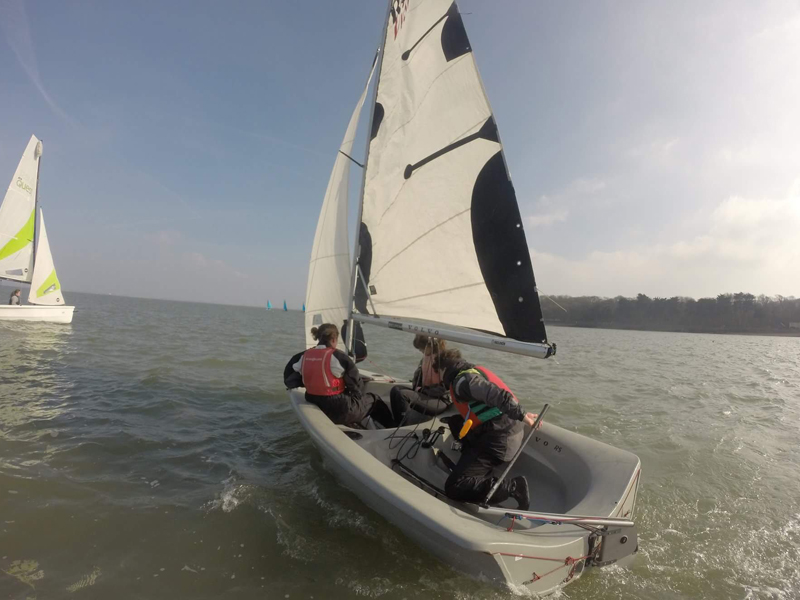
What is a Yacht?
Now, let’s set our course towards the world of luxury and leisure as we explore yachts. Yachts are watercraft that are primarily associated with private recreational use and luxury. While yachts can vary in size, they are generally larger and more luxurious than most boats. Yachts are designed to provide comfort, style, and an indulgent experience for their owners and guests.
Yachts are often equipped with luxurious amenities such as spacious cabins, lounges, dining areas, swimming pools, and even helipads. They are often a symbol of wealth and leisure, offering a wide range of recreational activities onboard. Yachts are commonly used for cruising, island hopping, and entertaining guests in style. Yachts are often crewed by professionals who ensure that the yacht and its guests receive top-notch service and attention to detail. Another key area of yachting is yacht racing which is a popular sport worldwide, for both regattas and offshore ocean racing. Yacht racing has a big following of competitors and spectators.
Find out our current yacht careers available .
What is a Superyacht?
Within the world of yachts, there exists an elite category known as superyachts. Superyachts are the epitome of luxury and extravagance. These exceptional watercraft are typically over 24 meters (79 feet) in length and offer unparalleled features and amenities. Superyachts boast multiple decks, spacious cabins, lavish interiors, state-of-the-art entertainment systems, and even onboard spas.
What sets superyachts apart is their exclusivity and customisation. They are often built to the owner’s precise specifications and incorporate the latest in design, technology, and comfort. Superyachts are a testament to engineering marvels and are synonymous with opulence and grandeur.
Explore more tips about superyachts .
Ship vs Boat vs Yacht
In terms of size, boats are the smallest, followed by yachts, and then ships, which are the largest of the three. Boats are typically used for personal or recreational purposes, while ships are primarily employed for commercial or transportation activities. Yachts, on the other hand, cater to the luxurious and leisurely desires of their owners and guests.
Another key factor that distinguishes these watercraft is their functionality. Boats are versatile and can be used for a variety of activities, such as fishing, water sports, and cruising. Ships, with their larger size and cargo-carrying capabilities, are designed for transporting goods or passengers over long distances. Yachts, as we’ve discovered, focus on providing a lavish experience and are associated with leisure and luxury or with racing.
So while boats, ships, and yachts all belong to the maritime world, they have distinct characteristics and purposes.
Start Your Maritime Career at UKSA
If you’re inspired by the world of boats, ships, and yachts and have a passion for maritime pursuits, consider embarking on a career in the industry. UKSA offers a range of courses and career development programs that can help you set sail on your maritime journey. Whether you dream of becoming a sailor, marine engineer, or yacht captain, UKSA provides the training, guidance, and support to turn your aspirations into reality. Explore the possibilities and chart a course for an exciting and fulfilling maritime career with UKSA!
Contact our team now .
Latest posts
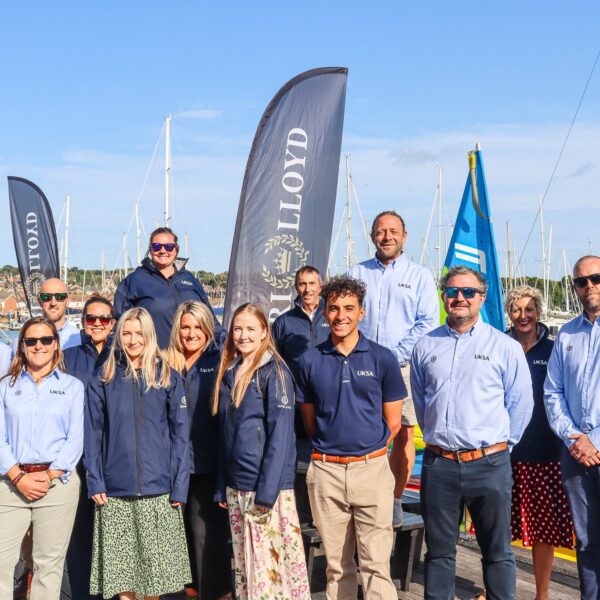
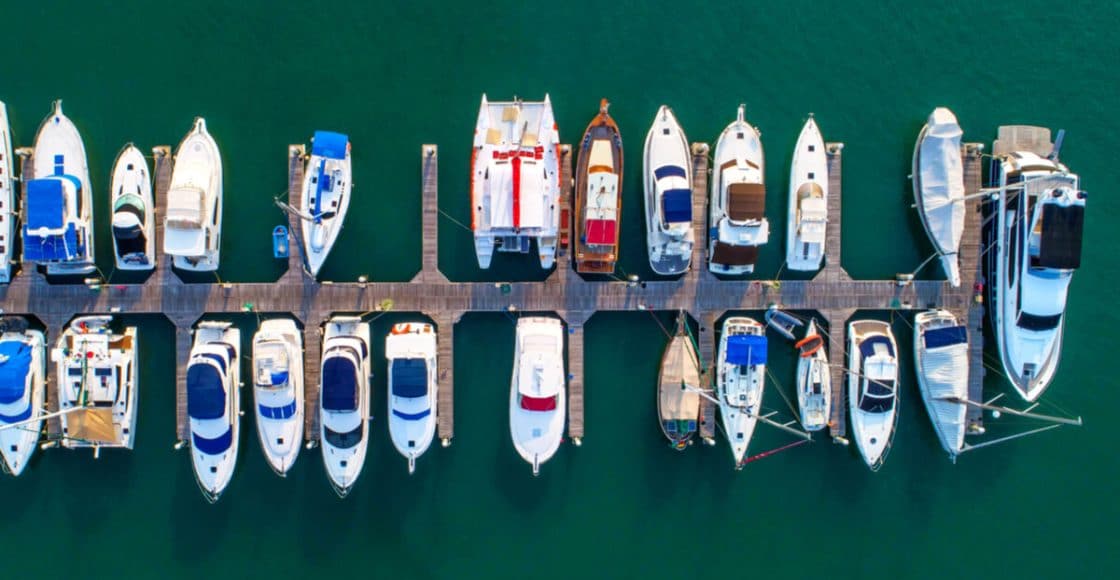
Yachts vs. Boats: What are the Differences?

Table of Contents
Last Updated on April 13, 2022 by Boatsetter Team
Many people use the words “boat” and “yacht” interchangeably, and some lean on the latter to make their ride sound more impressive. But what are the key differences between boats and yachts?
First, let’s look at some broad definitions of a boat, a yacht, and other related vessels.
- “Boat” can refer to just about any kind of vessel— towboat , fishing boat , center console , houseboat , and so on.
- “Dinghy” designates a small boat with a human or wind means of propulsion including a rowing dinghy or sailing dinghy. It also refers to a tender to a bigger boat or yacht.
- “Ship” is a large commercial boat, often used for distance travel and transport of goods or passengers – cruise ship, container ship, etc.
- “Yacht” is typically a larger boat with luxury amenities used as a recreational vessel— motor yacht , sailing yacht .
- “Superyacht” is a large yacht and is often also called a mega yacht . The delineation used to be at 80-feet but again, with today’s size creep, anything under 100 feet would just simply be called a yacht.
So, yacht or boat? Let’s dive deeper into the elements that differentiate a boat from a yacht.
Own a Boat or a Yacht? Learn How to Offset the Cost of Ownership by Listing on Boatsetter
Size of the Vessel
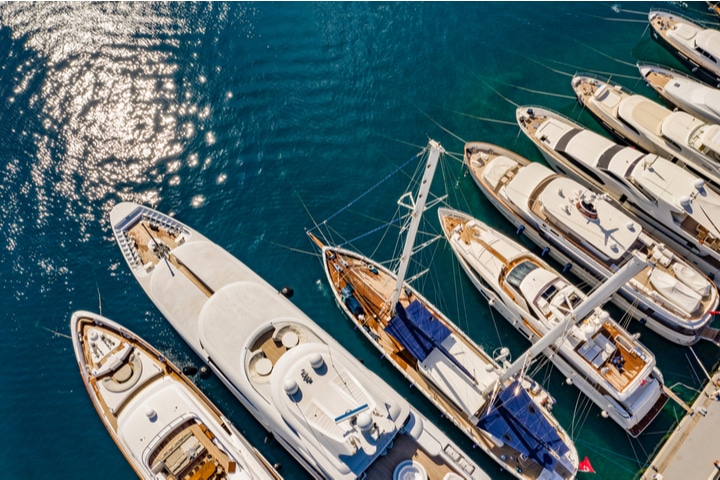
Some place a hard line at 35 feet. Below that, you have a boat and above, it’s a yacht. However, that’s an artificial differentiator.
Just 30 years ago, a 30-foot boat was considered large and could have been a yacht but as recreational boats grow longer, the term yacht has been pushed up the scale.
That said, a well-kept 40-foot boat designed for recreation can technically still be called a yacht (although larger vessels are likely to cost more, price isn’t a good indicator of yacht status primarily because it fluctuates with brand, age, and amenities).
Check out local yacht rentals near you to understand how size plays a difference.
What it’s Used For
A yacht is a vessel designed for recreational purposes. It generally operates on open waters (rather than small lakes or rivers) and has accommodations for overnight guests.
A cruise ship, on the other hand, accommodates a large number of passengers in a commercial setting whereas a yacht carries a smaller number (of paying or non-paying) passengers for private recreation.
Onboard Technology
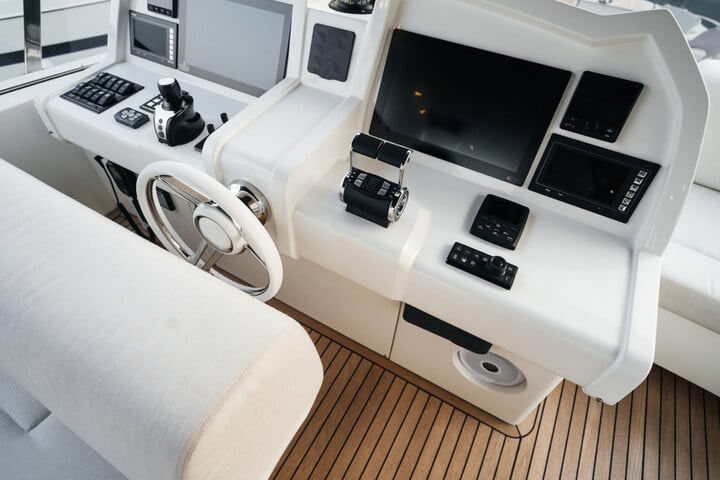
Advanced technology for navigation, communications, and system operation as well as redundant systems for safety can be found on a yacht that is likely to venture farther.
Again, there are caveats because today’s towboats that are fun day boats also feature technology such as GPS and digital switching that integrates many electrical and electronic features.
Propulsion Types
This is a tricky one. “Yacht” comes from the Dutch word “jaght” which referred to a sailing vessel that was used by the navy to capture pirate ships and later for recreation by the affluent.
Today, a yacht can be a large sailing vessel or a motor yacht. All larger yachts will have a motor for propulsion whether they have sails or not. Sailboats by design have smaller motors so trying to put a horsepower minimum on yacht propulsion is simply inaccurate.
Some define a yacht as having multiple crews to operate the vessel and tend to passengers or guests. The larger the yacht, the more crew will be required to navigate, maintain and service the vessel. That said, a couple who owns a 50-footer can call their boat a yacht although it’s owner-operated.
Luxury and Amenities
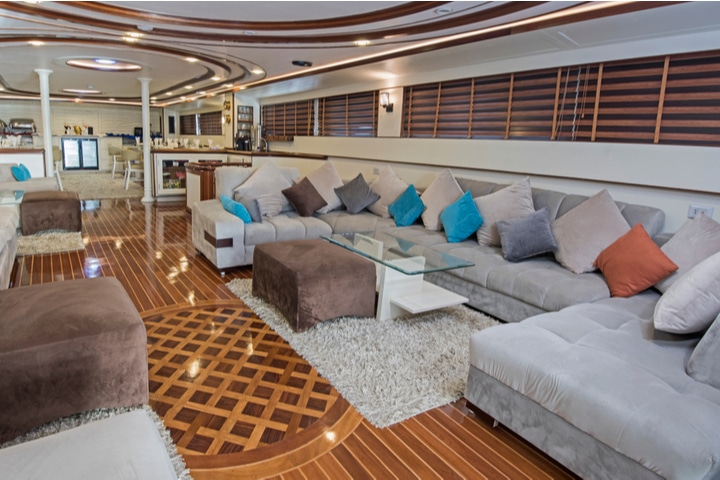
This is perhaps the best measure of a yacht. If the vessel offers accommodations, a galley , a head , and is luxurious in its presentation, it’s most likely a yacht.
That said, there are lots of center console fishing boats and towboats that are pretty nicely equipped these days and they wouldn’t be called a yacht.
All yachts are boats, but not all boats are yachts—and the lines are blurry. The word yacht elicits images of posh seafaring experiences while a boat evokes ideas of fun and perhaps work. Do some research to learn what size and type of boat or yacht is best for you .
To a degree, the point at which a boat becomes a yacht is in the ear of the beholder but if you focus on size, amenities, and the type of use, you’ll be able to discern the difference. Then all that remains is to find a way to spend time and have fun on any kind of vessel.
Browse All Available Boat & Yacht Rentals Across the Globe

Zuzana Prochazka is an award-winning freelance journalist and photographer with regular contributions to more than a dozen sailing and powerboating magazines and online publications including Southern Boating, SEA, Latitudes & Attitudes and SAIL. She is SAIL magazines Charter Editor and the Executive Director of Boating Writers International. Zuzana serves as judge for SAIL’s Best Boats awards and for Europe’s Best of Boats in Berlin.
A USCG 100 Ton Master, Zuzana founded and manages a flotilla charter organization called Zescapes that takes guests adventure sailing at destinations worldwide.
Zuzana has lived in Europe, Africa and the United States and has traveled extensively in South America, the islands of the South Pacific and Mexico.
Browse by experience

Explore articles
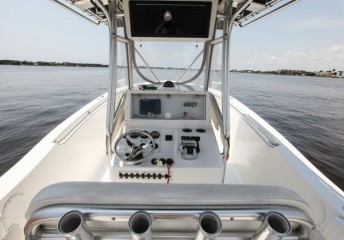
Renting a Boat? For a Good Time, Just Add a Captain
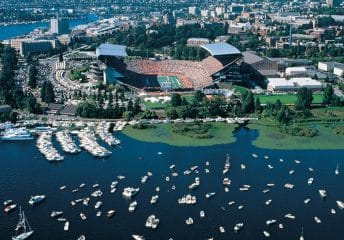
How University of Washington Minds Their Wake

10 Best Boats for Wakeboarding 2024
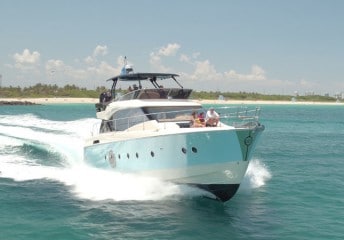
Ultimate Packing List: Bareboat Charter Provisioning
What is the Difference Between a Boat and a Yacht?
Key differences between ‘boats’ and ‘yachts’.
Boats and yachts are two different types of watercraft normally used for a range of recreational and commercial activities. Whilst people tend to use these terms interchangeably, there are numerous distinct differences between a boat and a yacht. There are six main differences that you should bare in mind when looking at boats or yachts , to help you gain the best understanding.

6 Differences Between Yachts and Boats
The first key difference between a boat and a yacht is their size. A yacht is typically bigger than a boat and whilst there is no strict definition of what a yacht is, the general consensus is that if it is over 40 feet in length, it is usually considered a yacht. Boats can also vary in size, starting from small dinghies to larger motorboats or ferries but as a whole are definitely smaller than yachts.
Typically, boats are used for more recreational activities including fishing, cruising and watersports. As well as this, they can be used for commercial use and transportation with cargo or ferries. This is why boats that aren’t ferries or cargo tend to have a smaller, more simplistic design. Each boat is designed specifically so they function for their activities. On the other hand, yachts are usually used for cruising, entertainment and pleasure. They are designed with a more aesthetic design in order to enhance the experience of passengers.
3. Luxury Features
Another factor that easily sets boats and yachts apart are their luxury facilities. In general, boats do not have luxury facilities and whilst they might have an underdeck area, this will only be small and not include any kind of ‘luxuries’. Yachts however are usually equipped with multiple luxury features including spacious cabins, full kitchens, multiple bathrooms, swimming pools, hot tubs, television systems and in some cases, even helipads. These are purposefully designed to heighten the onboard experience of passengers.
One thing you should expect to see when comparing yachts and boats is a difference in cost. Because boats are fit for a smaller, more simplistic purpose you should expect these to cost less than a yacht. You could, on average, buy a boat ranging from a few thousand pounds right up to £700,000 but a yacht would come at prices from about £100,000 to £10,000,000 . This is for many reasons including the size, purpose and functionality of a yacht compared to a boat.
5. Maintenance
Whilst it is important to consider the costs of buying a boat or a yacht , it is also important to consider the upkeep that is going to come with that. In general, a yacht requires more maintenance than boats due to them being larger and having more complex systems. They would require specialised cleaning, regular upkeep of their facilities including swimming pools, hot tubs, rooms etc and regular servicing of their mechanical systems. Boats would still need to undergo upkeep, but not to the extent that a yacht would. As a result, the price and work level are usually lower for boat maintenance .
6. Engine Power
The last difference to note between boats and yachts is the power of their engines. There are a lot of boats that won’t even have an engine, it could range from a small boat requiring manpower to operate to larger boats using wind and sails to move. Boats that do have an engine can reach quite high speeds and run for some periods of time, but their engine capacity is not comparable to a yacht. A yacht engine tends to be more powerful overall, which allows them to travel through rougher water and travel for very long periods of time.
Should I Buy Myself a Boat or a Yacht?
It is important to do your research about the boat or yacht you are looking to buy in order to make sure you are getting the watercraft fit for your purpose. If you are looking to partake in watersports or short trips, a boat is definitely more suitable for you. However, if you are looking for a more luxurious travel style then a yacht may be the one for you.
If you are looking to sell or buy, Clipper Marine might be the perfect option for you. We have experience selling a range of yachts and boats and can offer our expertise when setting the asking price, marketing the boat to potential buyers.
Clipper Marine Mailing List
- Yachts for Sale
- Sales Report 2024
- FAQ – Luxury Crewed Yacht Charters
- FAQ – Bareboat charters
- FAQ – Sell your Boat
- FAQ – Buying a Yacht
- How Much does it Cost to Charter a Luxury Yacht?
- All Blog Posts and News
- Yachting for beginners
- Indian Ocean
- Mediterranean
- Sales & New build
- Motor Yacht
- Event & News

Yacht Vs Boat: What is the Difference?
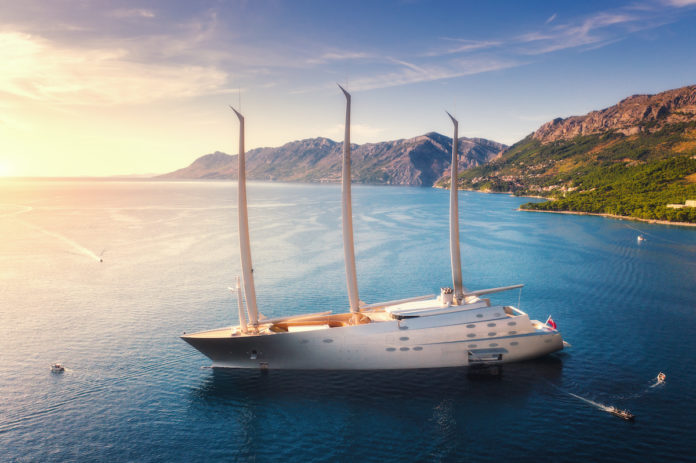
Definitions of words such as “yacht”, “boat”, or even “ship” are not always clear. Most of us make our own (unspoken) rules up, while others simply go with the flow and call their vessel whatever comes up at the moment.
So when does a boat become a yacht? Are all boats yachts? Are all yachts boats? What about ships?
Here is our subjective take on this vital matter.
The definition of a boat
In spoken or written English, it seems that anything able to float can be called a boat . It has little to do with size, function, or fit-and-finish. It is the most general term.
According to many dictionaries, boats are defined as “small vessels for traveling over water, propelled by oars, sails, or an engine”. So, a boat can have recreational purposes as well as commercial ones, but it is expected to be quite limited in size.
A yacht : our unofficial definition
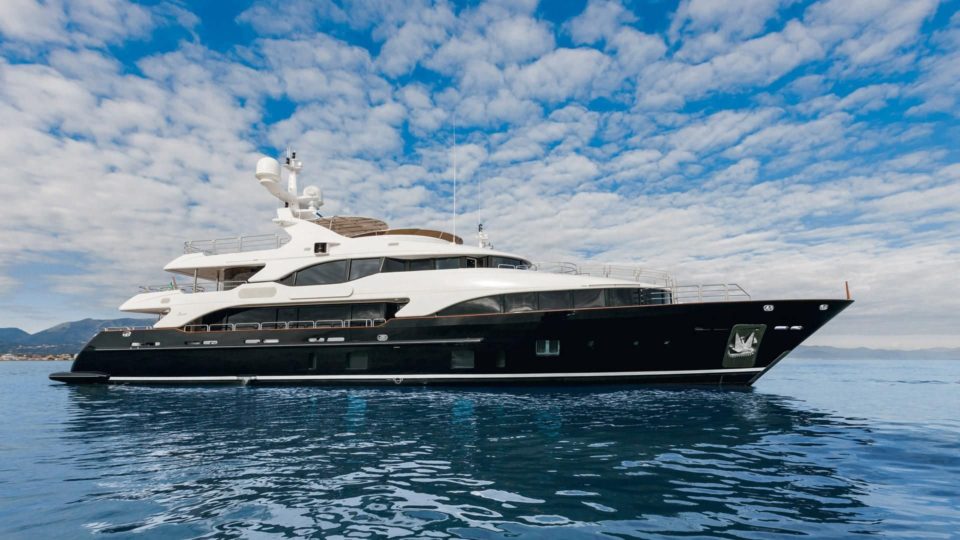
The word “yacht” generally refers to a more sophisticated craft than a boat or a ship.
Yachts can be sailed or motorized: so catamaran, monohulls, or even trimarans can also be called “yachts”.
To deserve their name, they have to be comfortable, spacious, well equipped and built with luxury in mind.
Regarding their functions, yachts are purely recreational.
They are designed for relaxation and leisure first, even though they can be suitable for long stays at sea and transatlantic crossings.
To sum up, as soon as your boat is a certain size and boasts several luxury features designed for leisure, then you can call it a yacht.
The definition of a ship
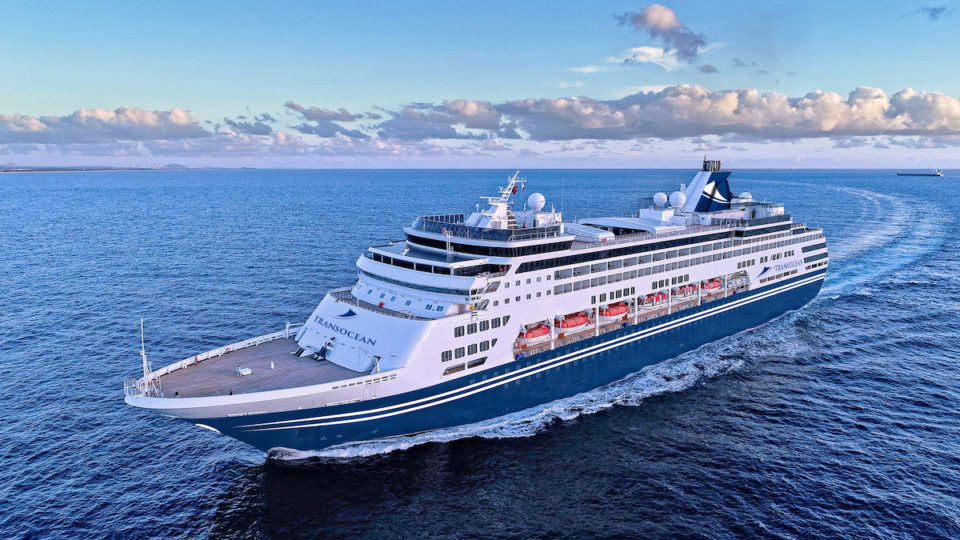
According to the Oxford dictionary, a ship is “a large boat for transporting people or goods by sea”.
The ship is associated with something larger and less fancy than a boat.
It is a “working” vessel, unlike yachts which are made for leisure purposes.
A ship usually needs a full crew to operate. A yacht might need a full crew to operate depending on its size. A boat usually implies smaller vessels and therefore most of them don’t need a crew.
Common vessels that are called “ships” include ferries, petrol tankers, or warships.
Details to look at to know if you are dealing with a boat, a yacht, or a ship
The size: one of the strong factors to identify a boat vs a yacht.
Size is one of the most determining factors to know how to call your vessel.
A boat is often expected to be smaller than a ship or a yacht. Generally, a vessel anywhere from 15-30 feet in length will be called a boat.
Starting from 15 meters (50 feet), private luxury recreational crafts can be considered yachts.
Starting from 24 meters (79 feet), you are entering the superyachts area.
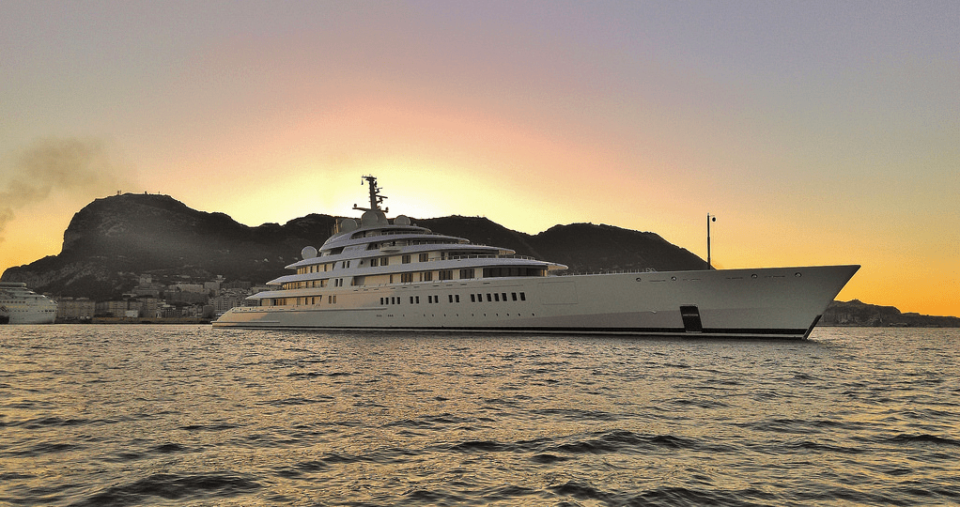
Above, 50 meters can start talking about mega yachts. Obviously, there is no upper limit to mega yachts. Currently, Azzam, the world’s biggest yacht is 180 meters long (590 feet).
So when it comes to differentiating between boat and yacht, size does matter.
But size alone isn’t enough to know the sort of vessel you are dealing with.
The function of a yacht vs a boat isn’t the same
The main function of its vessel is one of the easiest ways to recognize a boat from a ship or a yacht.
Boats can be used for both leisure and business (fishing, day trips, police, …) depending on their size and options.
On the other hand, a yacht has a purely recreational function. Unlike a “boat”, it can be used for long voyages on oceans thanks to its larger size, better propulsion, advanced electronics, guidance, and safety equipment, but especially thanks to its comfort. Yachts can protect passengers from bad weather and the comfortable cabins can accommodate several passengers for long stays. Yachts are also often available for charter with a staff taking care of the guests at a high standard of comfort.
Ships primarily have commercial functions. It can be forwarding freight, crossing the sea with thousands of people on board, or going on a warzone with a unit and its material.
To add to the confusion, some mega yachts such as Christina O could be called ships due to their initial function or their size.
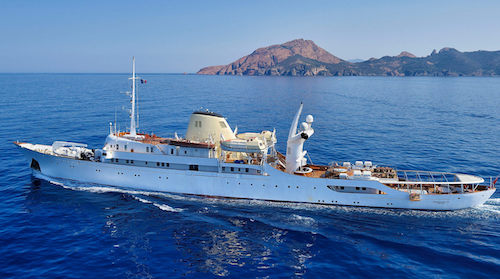
Besides these exceptions, it’s quite obvious to recognize a yacht from a boat or a ship simply by its size and the luxury of its amenities.
The luxury on board makes it a yacht or a boat
A yacht is a recreational vessel designed with luxury and comfort in mind.
The facilities, be it furniture, rooms, living spaces, safety equipment, and navigation systems are all luxurious on a yacht.
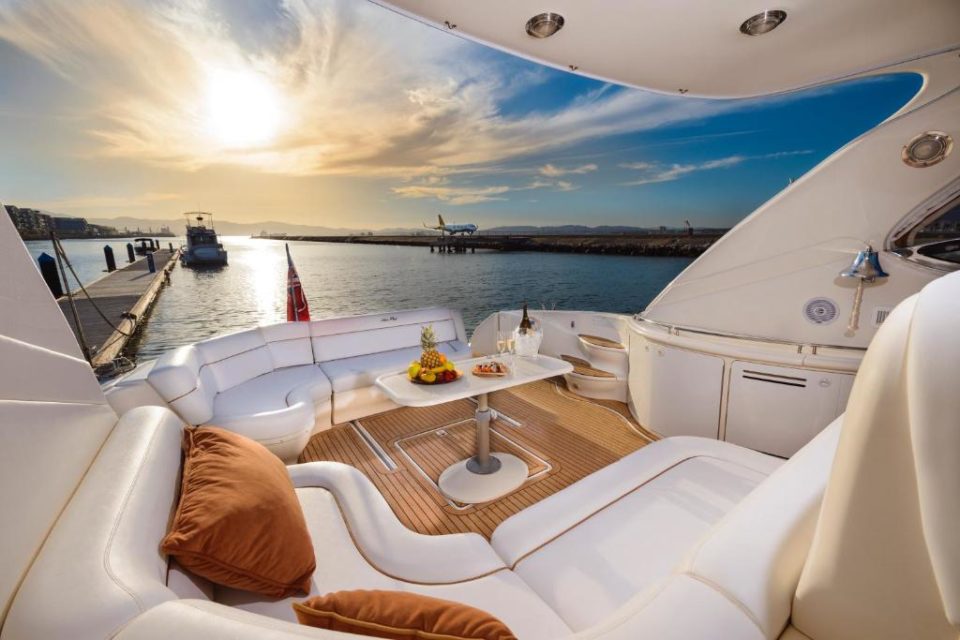
The notion of space is often very important to feel comfortable on board, even for long cruises. The largest and most luxurious yachts have various spaces such as beaches, sundecks … to make life on board as comfortable as on land, if not more.
To make it simple, if a vessel is luxurious, then more often than not, it’s a yacht.
Check out all our luxury yachts here.
The propulsion of the vessel can determine whether it’s a yacht or a boat
A boat can be rowed, propelled with its sails, or with one or several engines.
Motorized small boats can have impressive speed on the water thanks to their lightweight, but their engines are usually less powerful and sophisticated than yacht engines.
Some boats can sail long-distance when they are well equipped, such as solar panel, water maker etc.
On the other hand, equipment on yachts make them able to operate over very long distances, including crossing oceans.
Most ships are designed to cross the sea with safety and they are designed for this objective.
Looking at the propulsion is therefore not enough to know if a vessel is a boat, a yacht, or a ship, although it can give you a few clues.
The crew on board can tell the difference between a boat and a yacht
Commercial ships and professional boats obviously have experienced captains to sail them around the rough corners of the globe.
For yachts and leisure boats, it is less obvious.

Big yachts owners usually employ professionals to sail, but also manage the daily operations onboard. The number of enrolled crew members depends on the yacht’ size.
Usually, boats do not need a professional enrolled skipper to operate, if you know how to sail. But you can always rent a boat and hire a skipper to bring you wherever you want.
So, what should you call your vessel?
To make it simple, if your vessel is a luxury craft above 50 feet, designed for fun, recreation, relaxation, and comfort, then call it a yacht.
Anything below that size, call it a boat.
If you own a working craft rather than something recreational, especially if it’s a long vessel, then you are free to call it a ship.
But let’s be honest, nobody will blame you if you use the wrong term. You are entirely free to continue calling your canoe a yacht if you like it that way!
Read Also : How Much does it Cost to Charter a Luxury Yacht?
Starting from 50 feet (15 meters), a pleasure boat is usually considered a yacht.
Yes, a 40-feet boat can be considered a yacht if it has recreational use and a luxurious outfit. Otherwise, it is only a boat!
By definition, a ship is a large vessel that crosses oceans and other deep waters for commercial purposes. It carries cargo or passengers or performs specialized missions, such as defense, research, and fishing. So a boat becomes a ship when it is big, it weighs at least 500 tonnes or above and it has commercial use.
Private recreational boats from 33 feet are actually yachts. Luxury is also an important point once defining a yacht.
No. If the boat doesn’t have a recreational purpose, if it is below 33 feet long (10 meters), or if it is not luxurious, it is not a yacht but a boat!
RELATED ARTICLES MORE FROM AUTHOR
Luxury crewed yacht charters – frequently asked questions, luxury yachts for charter perfectly suited for 10 guests, skipper’s job and responsibilities: what you should know.
- Testimonials
- Privacy Policy
“Boat” vs. “Ship”: Chart A Course To Understand The Difference
- Boat Vs. Ship
- Yacht Vs. Boat
Ahoy, me hearties! A true seadog worth their salt would never let aboard a landlubber who calls their ship a boat . That kind of mixup is the talk that gets you walking the plank!
In this article, we’ll sail the seven seas of nautical knowledge to define the difference between the words ship and boat , explain what they refer to in technical and casual use, provide examples of different kinds of both ships and boats , and we’ll even clear up the meaning of the word yacht .
🚢 Quick summary
In casual use, the word boat is often used to refer to any watergoing vessel, regardless of its size or how it’s powered. However, large oceanfaring watercraft—those that use multiple sails or engines—are more properly called ships . In contrast, the word ship isn’t commonly applied to smaller craft. The word yacht is typically used to refer to any larger noncommercial vessel—one used for sailing or other recreation, as opposed to business.
What’s the difference between a boat and a ship ?
By definition, a boat is “a vessel for transport by water,” “a small ship,” or “a vessel of any size built for navigation of rivers or inland bodies of water.” In casual use, the word boat is used to refer to any vehicle used to travel on the water—anything from a canoe to an ocean liner.
In this kind of casual and general usage, the word boat is often used to refer to watercraft of all sizes and types, as you can see in the variety of terms that include the word, such as sailboat , motorboat , fishing boat , rowboat , tugboat , paddleboat , and lifeboat .
In contrast, the word ship is typically reserved to refer to a large, ocean-faring vessel propelled by multiple sails or engines.
(Of course, the word ship is also used to refer to large, nonwater craft, such as airship and spaceship .)
In technical, nautical contexts, the word ship sometimes specifically refers to a sailing vessel that has three or more square masts. As is the case with boat , though, the word ship is applied in the name of a variety of large watercrafts, including cruise ship , cargo ship , pirate ship , battleship , longship , and steamship .
Go Behind The Words!
- By clicking "Sign Up", you are accepting Dictionary.com Terms & Conditions and Privacy policies.
- Name This field is for validation purposes and should be left unchanged.
In contexts where it’s important to distinguish the difference, the distinction made between ship and boat is typically based on the size of the craft being discussed and if it is used only for ocean or sea travel. Additionally, the word boat can refer to vessels that don’t have any sails or engines, such as a kayak or a rowboat, whereas the word ship usually refers to vessels with many sails or large engines. Even in casual usage, it’s very uncommon for someone to call a small craft a ship , unless they’re doing so jokingly.
One distinction made in nautical contexts is that the word ship often refers to vessels too large to fit inside other vessels. By contrast, the word boat is often used to refer to smaller craft that can fit inside larger ones. For example, a massive cruise ship may have a large number of lifeboats inside it.
What are you sailing? An ocean or a sea ? Learn the difference here.
Yacht vs. boat
The word yacht typically refers to a vessel used for private, noncommercial reasons (those other than business), such as sailing or racing. As a general term, the word yacht can refer to any watercraft that isn’t intended to be used to make money, which includes anything from racing sailboats to billionaires’ floating ultra-luxury mansions.
The word yacht is not used to refer to small vessels, such as row boats or canoes. In casual usage, a yacht may be referred to with the more general terms boat or ship , but certainly not all ships and boats are yachts .
What's the difference between "uncharted" and "unchartered" territory?
Commonly Confused

Hobbies & Passions
Word Origins
Current Events
[ nid - uh -fi-keyt ]

French Navy Destroys Bomb-Carrying Drone Boat & Rescues 29 Crew From Attacked Oil Tanker In Red Sea

Houthi-Hit Oil Tanker Carrying 1,50,000 Tonnes Of Crude Poses Environmental Risk In Red Sea

World’s Largest Offshore Wind Operator Takes Delivery Of Industry’s Largest Installation Vessel

Watch: Ukrainian Strike Destroys Fuel-Laden Russian Ferry In Crimea’s Kavkaz Port

- 7 Differences Between a Ship and a Boat
Although most people know the difference between a ship and a boat, some can get confused between the two.
While talking about the difference between a ship and a boat, the first thing that comes to mind is their sizes. Usually, people consider ships to be massive whereas boats are smaller.
However, there are other aspects too, apart from size, which are discussed in this article.
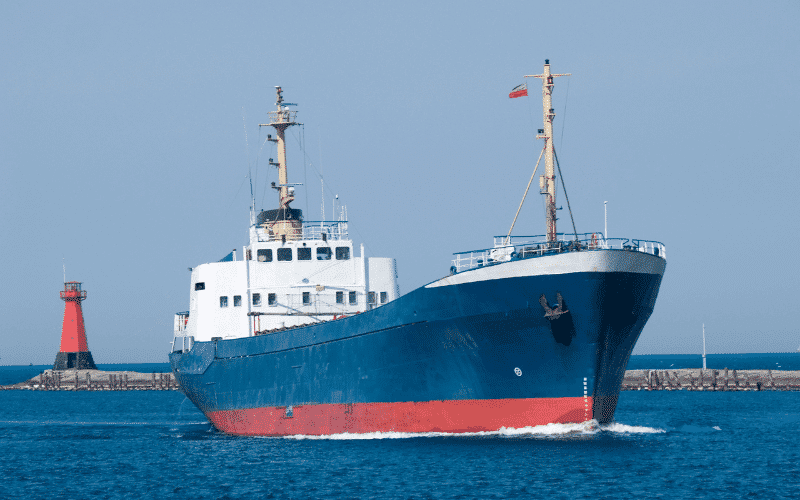
1. Size of Ship and Boat
The most important aspect while stating the difference between a ship and a boat is the size. It is said that the best way to differentiate between a ship and a boat is to remember that “A ship can carry a boat, but a boat cannot carry a ship.”
Technically speaking, a mode of water transport that weighs at least 500 tonnes or above is categorised as a ship. In comparison, boats are small in their structural size and displacement.
2. Operational Areas
Ships ply in deep waters, oceans and high seas. They are of various types like cruise vessels , naval ships, tankers , container ships , RoRo ships , and offshore vessels . They are mainly built for cargo/ passenger transportation across oceans.
Boats, in contrast, operate in restricted waters, near the coast and include ferrying and towing vessels, sail vessels, paddle vessels, kayaks , canoes , patrolling boats etc.
3 . Navigation and Technology
Boats are simple vessels with less complicated equipment, systems and operational maintenance requirements. Since ships are huge and carry large volumes of cargo over large distances, they feature advanced engineering, heavy machinery, and sophisticated navigational systems .
4. Crew Size
This is one of the major differences between a ship and a boat.
Ships have a large crew which consists of the Captain who commands the vessel, Second and Third Officers, Engineers, Cooks etc.
On the other hand, a smaller boat does not need many people.
5. Cargo Capacity
A boat is hardly used for carrying cargo. It is mostly used for recreational purposes like boating, fishing or ferrying people across short distances. Ships are built to be seaworthy since they carry thousands of tonnes across different ends of the planet.
Ships can also accommodate passengers or boats, whereas boat is a generic term used for a variety of watercraft.
6. Construction and Design
When it comes to construction and design, ships are complicated structures with various onboard machinery systems and equipment to ensure they are safe and stable to cross the rough seas.
A boat has a simple design and almost no machinery, though sophisticated ones have navigation systems, however they do not take up much space.
7. Propulsion
A boat can be powered by sails, motor, or human force, whereas a ship has dedicated engines. (Ships can also be propelled by sails or other advanced propulsion technologies)
Even though all vessels on the high seas are referred to as ships, submersible vessels are categorically termed as ‘boats.’
This is mainly because earlier, submersible vessels could be hoisted on ships till they were used in naval operations.
However, while talking about differences between a ship and a boat, only the vessels floating on the water surface are taken into consideration.

The use of the term ‘ship’ or ‘boat’ also depends on the region it is being used in. People often refer to a medium-sized fishing vessel as a boat, a medium-sized ferry or a recreational boat as a ship. As can be seen, people tend to generalise a vessel based on its size.
However, it is to be noted that the difference between a ship and a boat depends on many factors as discussed above.
You might also like to read:
- Types of Sailboats: A Comprehensive Classification
- A Guide to Different Types of Boats
- A Guide To Types of Ships
- Types of Fishing Vessels
Disclaimer : The information contained in this website is for general information purposes only. While we endeavour to keep the information up to date and correct, we make no representations or warranties of any kind, express or implied, about the completeness, accuracy, reliability, suitability or availability with respect to the website or the information, products, services, or related graphics contained on the website for any purpose. Any reliance you place on such information is therefore strictly at your own risk.
In no event will we be liable for any loss or damage including without limitation, indirect or consequential loss or damage, or any loss or damage whatsoever arising from loss of data or profits arising out of, or in connection with, the use of this website.
Related Articles
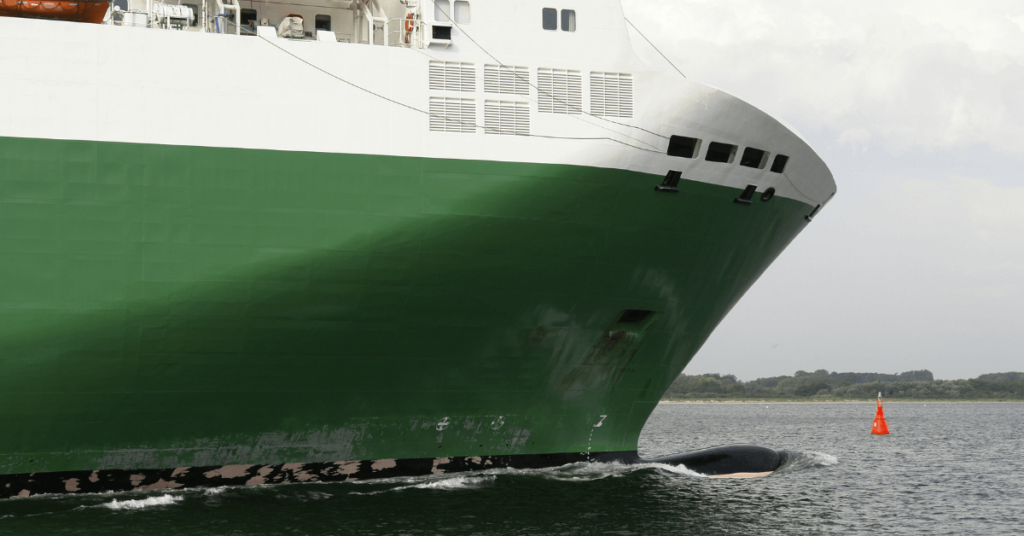
What are Hull Ferries?

New Jack-Up Vessel by Beluga- Hochtief
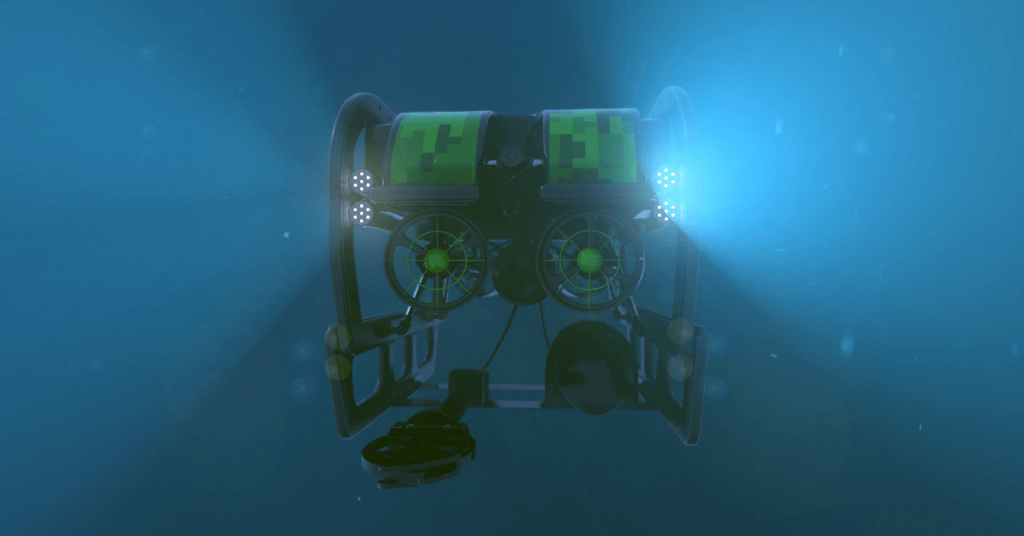
Everything You Ever Wanted to Know About Autonomous Underwater Vehicle (AUV)

Do you have info to share with us ? Suggest a correction

About Author
Raunek Kantharia is a marine engineer turned maritime writer and entrepreneur. After a brief stint at the sea, he founded Marine Insight in 2010. Apart from managing Marine Insight, he also writes for a number of maritime magazines and websites.
Read More Articles By This Author >
Daily Maritime News, Straight To Your Inbox
Sign Up To Get Daily Newsletters
Join over 60k+ people who read our daily newsletters
By subscribing, you agree to our Privacy Policy and may receive occasional deal communications; you can unsubscribe anytime.

BE THE FIRST TO COMMENT
46 comments.
Please i am a National Diploma student of Maritime Academy of Nigeria Oron studying nautical science, i want to know more about the course
Hi.thank its so good and sufficient
As a profesional mariner of over 25 years I would like to “weigh in” on this subject. What I will say is not about the currently accepted distinction between ship and boats, but rather historical. When ships (powered by sails) began to start losing trade to vessels powered by engines (boats) they as an industry attempted to associate these vessels with unplesant attributes like noise, soot, vibration, and in some cases slower speed. The sailoing industry (both cargo and passanger) would say that you could SAIL on a quiet, clean, calm, fast ship or go one of those dirty loud vibrating slow BOATS with an engine. The concept a ship being superior and a boat being inferior was sucessfully instituted. The engine powered vessels simply side stepped the ridicule bestowed on the term “boat” and made bigger, faster, clean, quiet vessels and took the market from the sail powered vessels along with the defination of SHIP for themselves. i wont step into the curret debate of what constitutes a boat or a ship but the origins of the debate stem from new technology (steam engines) fighting over market share.
A large freighter (1000′ x 85′, think of the Edmund Fitzgerald) hauling iron ore on the great lakes is referred to by her crew and company as a boat, never as a ship!
“Boats in contrast, are operable in smaller/ restricted water areas and include ferrying and towing vessels, sail vessels, paddle vessels, kayaks, canoe, patrolling vessels etc. Boats are mainly used for smaller purposes and mainly ply in areas near to the coast.” “Technologically, boats are simple vessels with less complicated equipment, systems and operational maintenance requirements.”
Correct me if I am wrong but, isn’t a submarine classed as a boat? That kind of contradicts what you have stated above.
comment:the any where abroad/indian officers you can any time call me on 30 year’s on merchant officers
You can put a boat on a ship but not visa versa eg life boats…
What is the difference between a boat and a ship?
1. The boat leans to the right when turning right
2. The ship leans to the left when turning right.
This is what I have been told by a old (90 Year old boat capt)
Great reply’s. some years ago while on the QE 2 a passenger asked one of the officers when does this boat dock? The young officer replied. “Madam, this is a Ship not a boat, a boat is those you get into when this ship is sinking!
Hello. May I please ask for some assistance from the forum?
I am writing a blog/journal on the differences between ships and yachts. What has prompted this conversation is the plethora of ‘superyachts’ now plying the international oceans and performing well on deep water passages.
Surely some of these can come under the category of ‘ship’, and not yacht, since many are being built on a larger scale than anything we’ve seen in past years. My understanding of the determination of a ‘ship’ is : Length, Tonnage, Draft and Displacement.
I have read your forum discussion regarding use, but I am still unclear as to where the line is drawn for this category. Many of the ‘superyachts’ carry cars, helicopters, pools, and require very advanced equipment, captain and crew. Perhaps we will soon see this as a real conversation in the industry.
Appreciatively, Rosanne Allen-Hewlett For ‘The LUXE Report’ ( Sailor, racer of only boats and yachts )
I was told that the difference between a ship and a boat is that a ship has a funnel and a boat doesn’t, no matter it’s size….
David Musselwhwite’s comment is the best way to determine a boat of a ship. This holds true for submarines (boats). If it leans into the turn, it is a boat. If it leans out on a turn, it is a ship.
In response to comments about the Edmund Fitzgerald, when you spend your life on one you can call it whatever you want. I am sure they all knew it was a ship, I served 20 years in the Navy and always said I was heading back to the boat even though I knew it was a ship.
While in Boot camp in 1964, US Coast Guard, we were told that a ship is 95 feet or longer and a boat is 94 feet and under. That makes it pretty simple.
With over 30 years in the marine industry including working at sea, ship building and ship repair, I would offer my comments.
Yes all above is true. My understanding is that the bottom line is ” a Ship carries boats ie Lifeboats”. If it doesn’t have a proper lifeboat, it is not a ship.
The best a boat has is dinghies or liferafts etc. Consequently a submarine does NOT carry life boats. There are many broader requirements Size and the ability to navigate very heavy seas, such as those whipped up by a tropical Revolving storm (TRS). It must be designed to travel in the open sea in all weather conditions and have lifeboats that can do the same. They carry cargo or passengers and have a substantial crew to operate it including engineers.
As far as the Edmund Fitzgerald is concerned, these vessels are an enigma. They were large and qualify in most areas, but – was it capable of going to sea and did it have sea-going lifeboats? Ironically it suffered probably as bad a storm as it would have done at sea. The problem is that in fresh water the waters are more treacherous than salt water as they rise up far more quickly.
But then again it sank meaning that it couldn’t handle it. Yes it was a large vessel but was it a Ship – ?
What is difference among?
Marine Boat Marine Ship Marine Craft Ship Boat
What is difference between Marina and Marine?
Being the son of a WW II submariner. My dad cruised the Atlantic of the east coast of US and in many conversations about the war he always called his boat a boat never a ship.Thats it!!
The simplest and most accurate definition I stay with is that a ship can carry a boat but a boat cannot carry a ship . SIZE MATTERS !
Captain chalga: try to form a coherent sentence.
I asked a friend of mine, “What is the difference between a boat and a ship?” He said, “About 100 feet . . .”
Thank you for the information. My husband won this discussion. God Bless all who are bravely floating on/in one. I am terrified of the ocean or even a small lake. You have my utmost respect for your sacrifice. I love seafood but would never know the pleasure of eating it without you brave souls. Thank you.
As a proud Submariner I have to disagree and will always say that I serve on a boat.
There is the Boat of Millions of years,which is a very advanced spacecraft able to.travel the millions of light years betwen Galaxies.
And you have vessels such as the Motor Vessel Arlene out of Port Arthur.
I was once told that a ship had multiple decks and a boat had only one.
When I queried sailing yachts that had berths under part of the deck, it was modified to the deck on a yacht is as much structural as deck, but if a vessel has 2 or more non structural “floors” it is a ship.
Then I mentioned tug boats and fishing boats and it all got confused.
It’s a bit like the difference between horse and pony. Despite every one saying it’s size, the falabella is a horse and polo ponies are ponies.
A naval architect (constructors) view is that to be a ‘ship’ a vessel must have at least one continuous internal deck running the length of the vessel. Large Submarines may have complete decks forward however, going aft, it is normal to have to descend a ladder onto a lower ‘engine room’ deck-level or platform. Some large freighters have a similar construction with internal split deck levels and that is why they are correctly known as boats, although in some cases the term ‘ship’ feels more appropriate because of their large displacement. The argument regarding leaning into or out of a turn is an interesting idea, however this may have more to do with hull and propulsion characteristics than vessel construction. In reality, as with most nautical expressions, whatever feels best to use is probably best and relying on the opinion of a sailor, with regards to an explanation of nautical expressions, puts you at the mercy of a sharp sense of humour.
It might be worth mentioning that some might refer to a ship as “boat” as a diminutive term of endearment, similar to the personification of a car or a pet by assigning the human pronouns to them.
I was once told a SHIP sails the oceans, a BOAT sails on rivers and lakes.
IT SEEMS WE HAVE VERY KNOWLEDGEABLE SEA MEN IN THE HOUSE . BUT I AGREE TOTALLY WITH JEREMY MEYER
It’s always been my info is that a boat can be up to 197’ whereas a ship is over that length. As with anything, I’m sure there are exceptions.
some of the people got it spot on. Tilt away from direction of turn = ship. Tilt towards the direction of turn = boat.
There are two points on every vessel. Center of buoyancy and center of gravity. A ship’s center of gravity is above its center of buoyancy. A boat’s center of gravity is below its center of gravity.
Anyone can answer me why we only know the bareboat charter for any size of the ship? It never mentions bareship charter?
“some of the people got it spot on. Tilt away from direction of turn = ship. Tilt towards the direction of turn = boat. There are two points on every vessel. Center of buoyancy and center of gravity. A ship’s center of gravity is above its center of buoyancy. A boat’s center of gravity is below its center of gravity.”
Except a kayak (or canoe) is like a ship – cg is above cb. If you get a ruddered kayak up to speed and hit the rudder hard it will heel outward like a ship. Since the paddler can easily influence heel, if you want to make a hard turn you heel the ‘boat” outward (to lessen the ends in the water) and sweep stroke on the outward side to spin the “boat”. Is a kayak then a “ship”? Hardly. This is exactly the problem with trying to make one pithy statement to define a ship or boat. It is far more complex than that.
I completely agree with you that the difference between a ship and a boat is the size. One of my friends have a boat, she bought it from Boat Lagoon Yachting. Thanks for sharing!
If you can haul it on the back of truck (even trailered), it’s likely a boat…but if the anchor weighs in like a truck it’s definitely a ship. Obviously, some subs are one or the other regardless of whether you can stuff a (non-inflatable) life boat inside. [Army logic from qualified ex-boat commander, combat support boats, bridge section, Corps of Engineers.]
I grew up near the Welland Canal, and it’s true: vessels which plied the Great Lakes were called “lake boats”, or more commonly, “Lakers”. Oceangoing vessels a were always and reflexively called “ships”..
I am wondering if the naval architect”s comment about internal decks makes the difference, as even a non-engineer can see that a deck extending stem to stern would provide more stability to a vessel’s structure.
The lake boats are always longer than the ocean-going ships, so it’s not size.And we occasionally get a visit from “tall ships”, which are oceangoing sailing vessels, but relatively short.
That’s really informative post. I appreciate your skills, Thanks for sharing.
I will take a shot at this. The word marine is redundant before ship and boat. The word “marine” relates to the sea and one of the conditions of being a ship is that it is ocean going. This does leave the possibility of not being a river boat but a marine boat. I would use the expression sea-going boat.
Marine craft is a useful expression when there is a need to make it cleat that you are not referring an aircraft, space craft etc.
On a general note there are no absolute rules or definition. All we can do is give examples of how the words are used. Companies, governments, navies and anyone else are free to make gheir own definitions but nobody else is bound by them.
I served on the U.S.S. CG-19 ‘THE DZLE & U.S.S. CV-63 KITTY HAWK FOR THE US NAVY in the 80’s. So what about the placement of the helm being center of Bridge on a ship & on starboard side usually on a boat?
With many years of sailing lakes to blue water sailing and large power yachts I can offer this for abot of levity. Afterall,the SeaView had the ‘Flying Sub” flown or driven undersea,on the surface and flown by Captain,Admirals and sadly Polititians and insane quasi research criminals. The Flying Sub also had an inflatable Zodiac,so both could be considered Life saving vessels. Plus,it was really cool!
Can be as difficult as we want. My training was as a NCO (enlisted man in the USN. As others have stated, A ship will lean away from its turn. A boat will lean into the turn. This is naturally due to there the center line of gravity is located. Cargo ships mass above that line. A boat can be loaded onto a ship (lifeboats). Regarding Submarines, they are affectionately referee to , by the crew, as boats and that goes back to WWI /II, the ELB. Electric Boat Div of General Dynamics, located Groton Connecticut .
This design is wicked! You obviously know how to keep a reader entertained. Between your wit and your videos, I was almost moved to start my own blog (well, almost…HaHa!) Fantastic job. I really loved what you had to say, and more than that, how you presented it. Too cool!
More importantly… are they all “She’s” ?
I’ve been wondering about this since I was younger and saw The Hunt for Red October. The COB (Chief of the Boat) was an interesting character, and I wondered by a Sub Chief was called Chief of the Boat, if a sub was a naval ship. Some very interesting and fascinating answers in here! I like the one about how a ship turns, leaning into it or not. That makes sense to me. As for the tiny kayak/canoe exceptions to this, I’d guess that if a human weighs more than the ‘vessel’ and can manipulate it’s attributes of buoyancy or center of gravity whichever, with their own body, then it doesn’t really count as either a boat or a ship. It really has no deck, nor propulsion other than human muscle, no anchor, etc. I don’t see it as much more than a modern design for what used to be termed a ‘raft.’ But I am just spit-balling here, don’t blast me! lol
That’s really nice post. I appreciate your skills. Thanks for sharing.
All the information that you shared with us is very useful for us. Thank you for sharing with us.
Leave a Reply
Your email address will not be published. Required fields are marked *
Subscribe to Marine Insight Daily Newsletter
" * " indicates required fields
Marine Engineering
Marine Engine Air Compressor Marine Boiler Oily Water Separator Marine Electrical Ship Generator Ship Stabilizer
Nautical Science
Mooring Bridge Watchkeeping Ship Manoeuvring Nautical Charts Anchoring Nautical Equipment Shipboard Guidelines
Explore
Free Maritime eBooks Premium Maritime eBooks Marine Safety Financial Planning Marine Careers Maritime Law Ship Dry Dock
Shipping News Maritime Reports Videos Maritime Piracy Offshore Safety Of Life At Sea (SOLAS) MARPOL
- Bottom Painting & Prop Speed
- Fiberglass & Paint Work
- Running Gear & Valves
- Full-Service Team
- Monthly Maintenance Programs
- Dockside Service Team
- Full-Service Boatyard
- Management Services
- Accounting & Reporting
- Relevant Management Experience
- News and Media
Boats, Schooners, Ships, Yachts and Superyachts - What’s the Difference?
Are boats, yachts and superyachts all the same? What happens if we throw ship in the mix, or vessel? Do they refer to different boat types or are they just interchangeable terms? Will some sea lover become upset if I refer to a boat as a schooner? What’s a schooner anyway? Some require yacht crews while others can be sailed solo.
For those who are new to sea life, it’s okay to not understand the difference. There are still some sea lovers who couldn’t tell you the difference between yachts and superyachts, between boats and ships. And some may say it doesn’t even matter. Some distinctions are clear, like the difference between a ship and schooner. While other differences are more difficult to establish, like the difference between yachts and superyachts.
Here’s a simple cheat sheet. Bookmark this page in case it comes up again! Happy sailing!
Boat – used for commercial and recreational purposes. Technically, boats are motor vessels less than 100 feet long.
Schooner – a sailboat that actually has a sail. Some schooners can also make use of an engine, but if there is no sail, it is not a schooner.
Ship – large, commercial sea vessel. Used to transport goods, people, and for military utility. Ships are usually over 200 feet long.
Yacht – purely recreational vessel. These vessels are built with the idea of luxury in mind. Not all of these vessels require yacht crews, some require 2 or 3 crew members.
Superyacht – a yacht over 100 feet in length from stern to bow. Superyachts cannot function without yacht crews and yacht management .
Regardless of whether you own a large schooner, yacht, or superyacht under 120 feet, Yacht Management has concierge crew, storage, and dockside maintenance services for your vessel. Contact us today for more information and see which packages we offer for your specific kind of vessel – now that you know!

For all inquiries, fill out the form below and a member of our team will respond as soon as possible

The Key Differences Between a Yacht and a Boat | Yacht vs Boat
Olivia benjamin.
- June 20, 2023

It’s a common misconception to assume that there is no difference between a yacht and a boat, but there are notable differences between these two types of watercraft. Yachts are generally larger and more luxurious than boats, typically smaller and designed for recreational activities such as fishing or water sports.
While yachts and boats serve as leisure vessels on the water, yachts often boast additional amenities like air conditioning, multiple bedrooms, and even hot tubs. Conversely, boats tend to have simpler features, such as a small cabin or storage space for fishing equipment.
Gaining a deeper understanding of these differences can assist you in determining whether to choose a yacht or a boat based on your unique needs and preferences. So, let’s dive deeper into the distinctions between these two types of vessels.
What is a Yacht and What is a Boat?
Boats and yachts are two terms that are often used interchangeably, but there are distinct differences between them. Let’s examine the differences between boats and yachts.
What is a Yacht?
You might think of a yacht as a luxurious vessel often used for leisure activities, like sailing the high seas or throwing lavish parties on board.
Yachts are typically larger than boats and have amenities such as multiple cabins, bathrooms, kitchens, and entertainment areas. They’re designed for comfort and style rather than speed or efficiency.
However, it’s important to note that not all yachts are the same. Some may be motorized, while others require sails to move through the water.
Moreover, there are several types of yachts, including racing yachts, cruising yachts, and mega yachts, with sizes ranging from 33 to over 160 feet. Each type caters to specific preferences and requirements, ensuring a tailored yachting experience.

What is a Boat?
A boat is a watercraft primarily designed to float, move, and navigate on water. It is a generic term that refers to a wide range of vessels used for various purposes such as recreation, transportation, military, commercial use, or fishing.
Boats come in different sizes, designs, and types, each serving a specific need. Small boats like kayaks and canoes are used for recreational purposes, while larger boats like tugboats serve commercial purposes.
Whether used for pleasure or work, boats offer great maneuverability. They can navigate in shallow waters and tight spaces and come equipped with navigation and other systems.

Boat vs Yacht | What is the difference between a Yacht and a Boat?
Do you want to know the differences between yachts and boats? Well, there are several key points to consider.
A boat is a generic term used to refer to any small watercraft. At the same time, a yacht is a specific type of boat often associated with luxury and recreational purposes. Many differences exist between yachts and boats, including the use, size, construction of these vessels, and many more.
Let’s explore these differences in detail to help you understand the unique qualities of each type of watercraft.
Difference in Size
Yachts are typically larger than boats, often measuring over 40 feet long. While boats come in various sizes, they often range from around 20-30 feet in length.
Boats are usually smaller and built for leisurely activities like fishing or cruising on lakes and rivers. On the other hand, yachts are designed for luxurious living at sea and are often equipped with multiple cabins, bathrooms, entertainment areas, and even swimming pools.
The size difference between yachts and boats also affects their handling of the water. Due to their large size and complex systems, yachts require experienced crews to operate them. Boats, on the other hand, can be easily handled by anyone with basic boating knowledge.
Difference in Use
While both vessels are designed for water travel but serve very different purposes, boats are typically smaller vessels used for recreational activities such as fishing, water sports, and short trips along the coast. They’re also commonly used for transportation in areas with many waterways.
Yachts, on the other hand, are much larger and more luxurious than most boats. They’re typically owned by wealthy individuals or companies and used for leisurely cruising or entertaining guests. Some yachts can even be chartered for special events such as weddings or corporate retreats.
Difference in Technology
While many boats rely on traditional engines or rowing, yachts often incorporate cutting-edge navigation, communication, and entertainment technology.
For example, some luxury yachts have state-of-the-art autopilot, radar and GPS systems that easily navigate even the most treacherous waters. Additionally, many yachts are equipped with satellite phones and other communication devices that allow passengers to stay connected no matter where they are.
Conversely, boats have basic technology geared towards recreational purposes, like fish finders or depth sounders. Older boats may still use traditional analog instruments for compass bearing and navigation.
Regardless of size or purpose, one thing is clear – technology plays a major role in differentiating between a yacht and a boat.
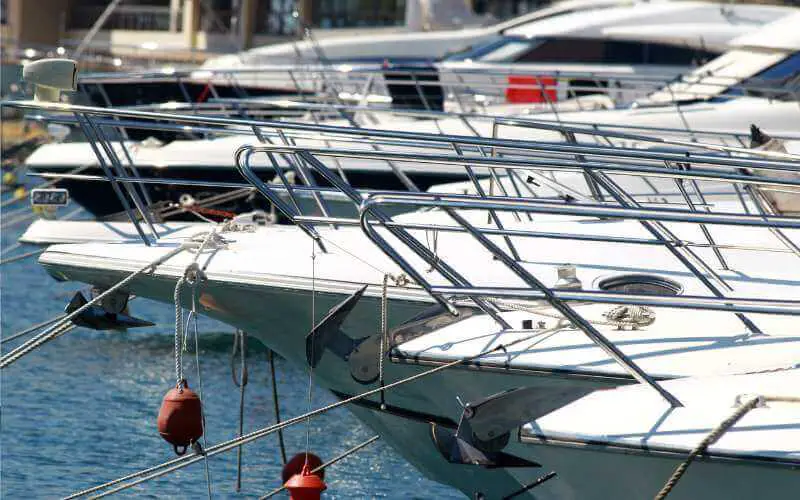
Differences in Power and Propulsion
When it comes to power and propulsion, yachts and boats have some key differences. Yachts are often equipped with larger, inboard engines designed for speed and endurance. In contrast, boats may have outboard motors that are smaller and better suited for recreational purposes.
Another key difference relates to the type of transmission used. Yachts often rely on multi-speed transmissions that allow the engine to operate at various speeds. Boats, on the other hand, may have simpler transmission systems that are designed for a lower level of performance.
The type of propulsion used is also important to consider. Yachts may be propelled by jets, controllable pitch propellers or other high-tech means, enabling them to perform well in various conditions. Boats typically rely on simpler propellers unsuited to more demanding environments.

Difference in Price
When it comes to price, yachts and boats are on opposite ends of the spectrum. Boats, being smaller and typically used for recreational purposes, can range from a few thousand dollars to a few hundred thousand dollars.
Yachts, on the other hand, are significantly more expensive. These vessels are often larger and more luxurious, costing several million to hundreds of millions of dollars.
The cost of owning a yacht goes beyond just the initial purchase price. Yachts require significant upkeep, including maintenance, insurance, and docking fees. However, yacht owners are often willing to pay high costs for the prestige and luxury of owning such vessels.
The Difference in Luxury and Comfort
Luxurious yachts have everything from plush interiors with high-end finishes to state-of-the-art entertainment systems. Many yachts also come equipped with luxurious bedrooms, bathrooms, and gourmet kitchens.
In addition to these features, yachts offer expansive decks and outdoor spaces for entertaining guests or simply enjoying the sun and sea breeze.
When it comes to luxury and comfort, there really is no comparison between a yacht and a boat. While boats may be functional for certain activities, such as fishing or water sports, they offer a different level of extravagance than you’ll find onboard a yacht.
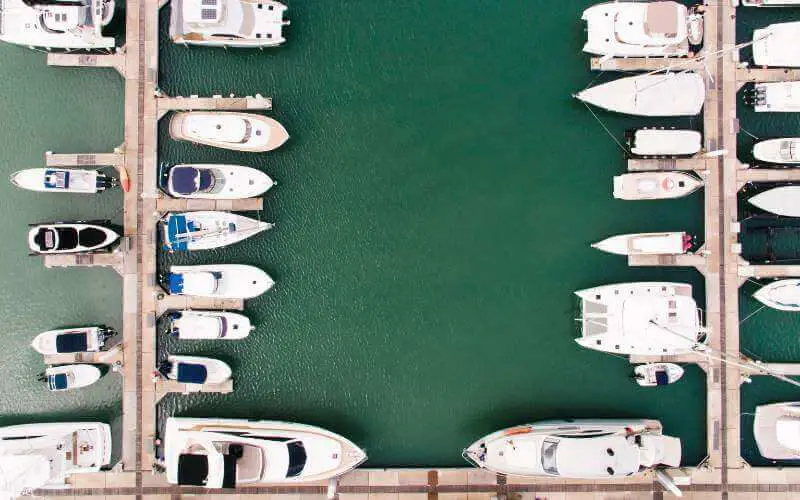
Frequently Asked Questions
What is the cost difference between purchasing a yacht and a boat.
Before you set sail, remember, a yacht is not just a bigger boat. The difference between purchasing a yacht and a boat can be significant, with yachts typically costing millions while boats range from thousands to hundreds of thousands.
Are there any legal requirements for operating a yacht versus a boat?
To operate a yacht, you may need a captain’s license and have to follow specific regulations depending on the size of your vessel. For boats, requirements vary by state and type of boat but are generally less strict.
How does the size of a yacht compare to the size of a boat?
Yachts are generally larger than typical boats, ranging from 33 feet to over 160 feet in length. However, the size distinction between a yacht and a boat needs to be clearly defined and can vary depending on personal perception.
Are there any specific maintenance requirements for a yacht that differ from those of a boat?
Yachts require meticulous maintenance to ensure they remain seaworthy. This includes regular inspections, cleaning, and repairs. These tasks are more complex and costly than those typically required for boats but crucial for the safety of all onboard.
What is the largest yacht in the world?
As of 2023, the largest yacht in the world is the SOMNIO , measuring 222 meters (728 feet) in length. The yacht is under construction and due for launch in mid-2024.
A yacht can be likened to a floating mansion, replete with lavish amenities and luxurious features, often owned by affluent individuals who relish time at sea. These vessels boast multiple decks, spacious cabins, and even swimming pools.
In contrast, boats come in various shapes and sizes, ranging from small dinghies to large commercial tugboats. While some boats offer basic amenities like a small cabin or restroom, they cannot compete with the luxury of a yacht.
The primary distinction between a yacht and a boat lies in luxury and comfort. Yachts epitomize extravagance, providing amenities akin to a high-end hotel suite, while boats prioritize practicality and functionality.
Ultimately, choosing between a yacht and a boat depends on personal preferences and intended use.
A Guide to Naming Your Boat: Finding the Perfect Name for Your Boat
Naming a boat is an important and personal decision every boat owner must make. Whether you have just purchased a

What is the Steering Wheel on a Ship Called?
The ship steering wheel holds a special place in maritime history, from tales of daring adventures on the high seas

Best Way to Avoid Overloading Your Boat and Keep Your Boat Capacity Under the Weight Limit
Embarking on a boating adventure brings a sense of excitement and freedom. However, ensuring the safety and stability of your
Workshop Insider Newsletter
Be a workshop insider get our latest collection of news and announcements delivered to your inbox..., latest articles.
- June 25, 2024
- Boats , Marine Engineering
- June 24, 2024
Navigating the Darkness: Understanding Boat Navigation Lights and the Different Types
Boat collisions: how to avoid collisions with another boat.
- September 12, 2023
The Ultimate Guide to Pipeliner Welding Hoods: Features, Benefits, Buying Guide, and Best Practices
- Welding Helmets Buying Guides
- September 11, 2023

- Privacy Policy
- Terms of Use
- Affiliate Disclosure

What’s the Difference Between a Ship and a Boat?
When it comes to talking about watercraft, the terms “ship” and “boat” are often used interchangeably.

However, there are differences between the two that are worth exploring. Understanding these differences can help clarify what type of vessel is being referred to and what its capabilities may be.
Defining the terms is a good starting point. Generally, a ship is a larger vessel that is used for commercial or military purposes.
It typically has a displacement hull, which means that it moves through the water by pushing it aside as it goes.
A boat, on the other hand, is a smaller vessel that can be used for a variety of purposes, including recreation, transportation, and fishing.
Boats can have either displacement or planing hulls, which means that they use the water’s surface tension to lift themselves out of the water and move more quickly.
Table of Contents
Key Takeaways
- Ships and boats are not the same thing and have distinct differences in their design and construction.
- The terms “ship” and “boat” are often used interchangeably, but a ship is typically larger and used for commercial or military purposes while a boat is smaller and used for a variety of purposes.
- Understanding the differences between ships and boats can help clarify what type of vessel is being referred to and what its capabilities may be.
Boat vs Ship

Defining the terms “ship” and “boat” has been a topic of debate for centuries. The English language has evolved over time, and so have the definitions of these terms.
While the two words are often used interchangeably, there are some key differences between them.
Dictionary Definitions
According to the Merriam-Webster dictionary, a ship is defined as “a large seagoing vessel.” On the other hand, a boat is defined as “a small vessel for travel on water.”
The Oxford English Dictionary defines a ship as “a large seagoing vessel,” while a boat is “a small vessel for use on water.”
Key Differences
The main difference between a ship and a boat is their size. A ship is typically larger than a boat and can carry more cargo and passengers.
Ships are also designed for longer journeys and can travel across oceans .
Boats, on the other hand, are smaller and are generally used for shorter trips, such as fishing or pleasure boating.
Another key difference between the two is their purpose. Ships are designed for commercial or military purposes, while boats are used for recreational or personal use.
Ships are often used for transporting goods, while boats are used for activities such as fishing, water sports, and leisurely cruising.
In conclusion, while the terms “ship” and “boat” are often used interchangeably, there are distinct differences between the two.
Ships are larger vessels designed for longer journeys and commercial or military purposes, while boats are smaller vessels used for recreational or personal use.
Understanding the differences between these two terms can help clarify communication in maritime contexts.
Design and Construction

When it comes to the design and construction of vessels, there are some key differences between ships and boats.
In general, ships are larger and more complex than boats, and they require more sophisticated engineering and technology to design and build.
Ship Design and Construction
Ships are designed and constructed to be able to withstand the harsh conditions of the open sea .
This means that they need to be stable and able to handle large waves and high winds.
To achieve this stability, ships are designed with a low center of gravity and a wide beam.
In terms of construction, ships are typically built using steel or other strong materials that can withstand the stresses of the open sea.
They also require a significant amount of engineering and technology to design and build, including advanced computer modeling and simulation tools.
Boat Design and Construction
Boats, on the other hand, are generally smaller and less complex than ships. They are often used for recreational purposes, such as fishing or pleasure cruising, and they are designed and constructed to be more nimble and maneuverable than ships.
In terms of design, boats can vary widely depending on their intended use. Some boats are designed for speed and maneuverability, while others are designed for stability and comfort.
They can be made from a variety of materials, including wood, fiberglass, and aluminum.
Boats are typically less expensive and easier to build than ships, but they still require a certain level of engineering and technology to design and construct.
They need to be stable and safe, and they must be able to handle the conditions of the water they will be used in.
Size and Capacity

Ships are large vessels designed to navigate deep waters and transport cargo or passengers over long distances.
Their size and capacity vary depending on their intended use. The cargo capacity of a ship is determined by its size, which is measured in gross tonnage (GT) or deadweight tonnage (DWT).
The GT is the total volume of all enclosed spaces on a ship, while the DWT is the weight of cargo, fuel, water, and stores that a ship can carry.
Large cargo ships can have a capacity of over 20,000 TEUs (twenty-foot equivalent units), which is equivalent to 20,000 twenty-foot containers.
These ships can be over 400 meters long and 59 meters wide. They are used to transport goods such as oil, chemicals, and other bulk cargo.
Container ships are the most common type of cargo ship and have a standardized design to accommodate shipping containers.
Passenger ships, on the other hand, are designed to transport people and have a capacity ranging from a few hundred to several thousand passengers.
Cruise ships are the largest passenger ships and can have a capacity of over 6,000 passengers.
Boat Size and Capacity
Boats are smaller vessels designed for use in shallow waters and for short-distance transportation.
They come in various sizes and shapes, ranging from small rowboats to large yachts. The capacity of a boat is determined by its size and weight-carrying capacity.
Small boats, such as dinghies and canoes, have a capacity of a few people and are used for recreational purposes.
Larger boats, such as motorboats and sailboats, can have a capacity of up to 15 people and are used for fishing, water sports, and short-distance transportation.
Types and Purposes

Ships are large seafaring vessels that are designed for a variety of purposes. The following are some of the most common types of ships:
- Cargo Ships: These are vessels that are designed to transport goods and cargo across the sea. They may carry a variety of goods, including raw materials, finished products, and consumer goods.
- Naval Ships: These are vessels that are designed for military purposes, such as protecting a country’s coastline or engaging in warfare. They may include warships, submarines, and other types of vessels.
- Passenger Ships: These are vessels that are designed to transport people across the sea. They may include cruise ships, ferries, and other types of vessels.
Types of Boats
Boats are smaller vessels that are designed for a variety of purposes. The following are some of the most common types of boats:
- Fishing Boats: These are vessels that are designed for fishing purposes. They may include commercial fishing boats or recreational fishing boats.
- Lifeboats: These are small boats that are designed to provide a means of escape in case of an emergency on a larger vessel.
- Kayaks and Canoes: These are small, lightweight boats that are designed for recreational purposes, such as kayaking or canoeing.
- Sailboats: These are boats that are powered by the wind. They may include racing sailboats or recreational sailboats.
- Motorboats: These are boats that are powered by an engine. They may include speedboats, yachts, and other types of vessels.
Ships and boats are designed for a variety of purposes, including recreational and commercial purposes.
Recreational purposes may include activities such as fishing, sailing, and cruising.
Commercial purposes may include transporting goods and cargo across the sea, as well as military purposes.
Cargo ships are designed to transport goods and cargo across the sea.
They may include container ships, which are designed to transport large containers of goods, or bulk carriers, which are designed to transport large quantities of bulk materials such as coal or grain.
Naval ships are designed for military purposes, such as protecting a country’s coastline or engaging in warfare.
They may include warships, submarines, and other types of vessels.
Passenger ships are designed to transport people across the sea. They may include cruise ships, ferries, and other types of vessels.
Fishing boats are designed for fishing purposes, either for commercial or recreational purposes.
Lifeboats are designed to provide a means of escape in case of an emergency on a larger vessel.
Kayaks and canoes are small, lightweight boats that are designed for recreational purposes, such as kayaking or canoeing.
Sailboats are powered by the wind, while motorboats are powered by an engine.
Operational Areas

When it comes to operational areas, both ships and boats can operate in a variety of environments, including oceans, inland waterways, rivers, lakes, and other bodies of water.
However, there are some key differences in the specific operational areas that are best suited for each type of vessel.
Ships Operational Areas
Ships are typically designed for deep water and oceangoing operations. These vessels are often larger and more powerful than boats, making them better suited for long-distance travel and heavy cargo transport.
Ships are commonly used for international trade and commerce, as well as for military operations and scientific research.
In addition to oceanic operations, ships can also operate in coastal areas, where they can transport goods and people between ports.
Some ships are designed to operate in specific environments, such as icebreakers that are used to navigate through frozen waters.
Boats Operational Areas
Boats, on the other hand, are better suited for inland waterways, such as rivers, lakes, and other bodies of water.
These vessels are often smaller and more maneuverable than ships, making them ideal for recreational activities like fishing, water sports, and sightseeing.
Boats can also be used for commercial purposes, such as transporting goods and people along inland waterways.
Coastal areas can also be navigated by boats, but they are typically limited to nearshore operations due to their smaller size and lower power.
Propulsion and Navigation

Ships are large vessels designed for long-distance travel across oceans and seas.
They are equipped with powerful engines that provide propulsion and enable them to move through water. The engines are typically powered by diesel or gas turbines.
Ships also have advanced navigation systems that make it possible for them to travel safely across vast distances.
Ship propulsion systems are designed to provide the necessary thrust to move the vessel through water.
The engines are typically connected to propellers that are located at the stern of the ship .
The propellers are designed to convert the rotational energy of the engines into forward motion, propelling the ship through the water.
Navigation systems on ships are designed to provide accurate information about the ship’s location, speed, and direction.
This information is critical for safe navigation, especially in areas where there are hazards such as rocks, reefs, or shallow waters.
Navigation systems on ships typically include radar, GPS, and other advanced technologies.
Boat Propulsion and Navigation
Boats are smaller vessels designed for use on lakes, rivers, and other bodies of water.
They can be powered by a variety of different propulsion systems, including sail, motor, and paddle.
Boats are typically designed for shorter distances and are not equipped with the same advanced navigation systems as ships.
Boat propulsion systems are designed to provide the necessary thrust to move the vessel through water.
The propulsion systems can be powered by motors, sails, or paddles. Motor-powered boats are the most common and are typically powered by gasoline or diesel engines.
Sail-powered boats use the wind to provide propulsion, while paddle-powered boats are propelled by human power.
Navigation systems on boats are typically simpler than those on ships. They may include basic navigation tools such as compasses, maps, and charts.
Boats may also be equipped with GPS systems, but these are less common than on ships. Navigation on boats is typically done by visual landmarks and nautical charts.
Crew and Command

The crew of a ship is typically larger than that of a boat and can range from a few dozen to several hundred people depending on the size of the vessel.
The captain is in charge of the ship and its crew, and is responsible for ensuring the safety of the ship and its passengers.
The captain is also responsible for navigating the ship and making decisions about its course.
In the US Navy and Royal Navy, the captain of a ship is referred to as the “commanding officer” or “CO”.
The CO is responsible for the overall mission of the ship and its crew, and is held accountable for any successes or failures.
The crew of a ship is organized into different departments, such as engineering, navigation, and communications.
Each department has its own leader, such as a chief engineer or chief mate, who reports to the captain.
Boat Crew and Command
The crew of a boat is typically smaller than that of a ship and can range from a few people to a dozen or so.
The captain of a boat is responsible for navigating the vessel and making decisions about its course.
In general, boats are less complex than ships and require less specialized knowledge to operate.
As a result, the crew of a boat is often less formalized and more flexible than that of a ship.
The captain of a boat is often responsible for multiple tasks, such as handling the sails, steering the boat, and managing the crew.
In some cases, the captain may also be responsible for cooking and other domestic tasks.
Historical Evolution

Ships have been an integral part of human civilization for thousands of years. The history of ships dates back to ancient times when people used rafts made of logs to cross water bodies.
As technology advanced, so did the design and construction of ships. The first sailing ships were developed by the ancient Egyptians and Phoenicians, and they used them for trade and commerce.
The clipper ships, which were developed in the 19th century, were some of the fastest sailing ships ever built.
These ships were used for transportation of goods and people across the oceans.
History of Boats
Boats have been in use for transportation, fishing, and leisure activities for thousands of years.
The first boats were made of animal skins and reeds and were used by early humans for fishing and transportation.
As civilization advanced, boat design and construction also evolved.
Canoes and kayaks were developed by indigenous people around the world for hunting and transportation in rivers and lakes.
These boats were made of wood, animal hides, and other materials.
In modern times, boats are used for a variety of purposes, including transportation, recreation, and military purposes.
The design and construction of boats have also evolved, with the use of new materials such as fiberglass and aluminum.
Today, boats come in all shapes and sizes, from small dinghies to large cruise ships.
Frequently Asked Questions
Is a submarine considered a boat or a ship.
A submarine is classified as a boat, not a ship. This is because submarines are typically smaller in size and are designed to operate underwater.
What is the difference between a ship and a sailboat?
A ship is a large vessel that is designed to transport people or cargo across bodies of water, while a sailboat is a smaller vessel that uses wind power to move across the water.
When does a boat become a yacht?
There is no clear distinction between a boat and a yacht. Generally, a yacht is considered a luxury vessel that is used for pleasure cruising and is larger and more expensive than a typical boat.
What are the different types of ships and boats?
There are many different types of ships and boats, each designed for a specific purpose. Some common types of ships include cargo ships, cruise ships, and naval ships.
Common types of boats include fishing boats, speedboats, and sailboats.
Why are submarines called boats and not ships?
Submarines are called boats because they were originally designed as underwater vessels for military use.
In the early days of submarines, the term “boat” was used to describe any vessel that operated underwater, regardless of its size or purpose.
Is a ferry classified as a boat or a ship?
A ferry is typically classified as a boat. Ferries are designed to transport people and vehicles across bodies of water and are often used for public transportation.
However, some larger ferries may be classified as ships due to their size and capacity.
Add comment
Cancel reply.
Save my name, email, and website in this browser for the next time I comment.
You may also like

What’s the Difference Between Port and Starboard?

Biggest Ship in the World
Latest articles.
- California Kayakers Nearly Swallowed: Humpback Encounter Turns Surprise Adventure
- Seven Seals Rescued from the Clutches of Ocean Debris
- What’s the Difference Between Seaweed and Seagrass?
- Hilarious Video Shows How Dolphins Use Pufferfish to Get High!
- The Tallest Bridge Ever Built: A Marvel of Modern Engineering
- Are There Sharks in the North Sea?
About American Oceans
The American Oceans Campaign is dedicated primarily to the restoration, protection, and preservation of the health and vitality of coastal waters, estuaries, bays, wetlands, and oceans. Have a question? Contact us today.
Explore Marine Life
- Cephalopods
- Invertebrates
- Marine Mammals
- Sea Turtles & Reptiles
- Sharks & Rays
- Shellfish & Crustaceans
Copyright © 2024. Privacy Policy . Terms & Conditions . American Oceans
- Ocean Facts

Ship vs. Yacht — What's the Difference?
Difference Between Ship and Yacht
Table of contents, key differences, comparison chart, navigation areas, design priorities, crew requirements, compare with definitions, common curiosities, what is the primary purpose of a ship, do you need a professional crew to operate a ship, can a yacht sail across the ocean, where can ships typically dock, is a yacht considered a luxury, which is more expensive to maintain, a ship or yacht, can a yacht be as big as a ship, can ships be used for personal purposes, is a cruise ship considered a ship or yacht, which is faster, a ship or yacht, do yachts have a specific size range, share your discovery.

Author Spotlight
Popular Comparisons

Trending Comparisons

New Comparisons

Trending Terms

- Yachting for beginners
- Owning a yacht
- Motor Yachts
- Sailing Yacht
- Indian Ocean
- Mediterranean
- Buying or Selling a Yacht
- Yachting Events
- FAQ – Luxury Yacht Charter
- FAQ – Buying a Yacht
- FAQ – Sell your Yacht
- How Much Does It Cost To Charter A Luxury Yacht?
- All our Blog Post & News

What differentiates a yacht from a superyacht or a mega yacht?
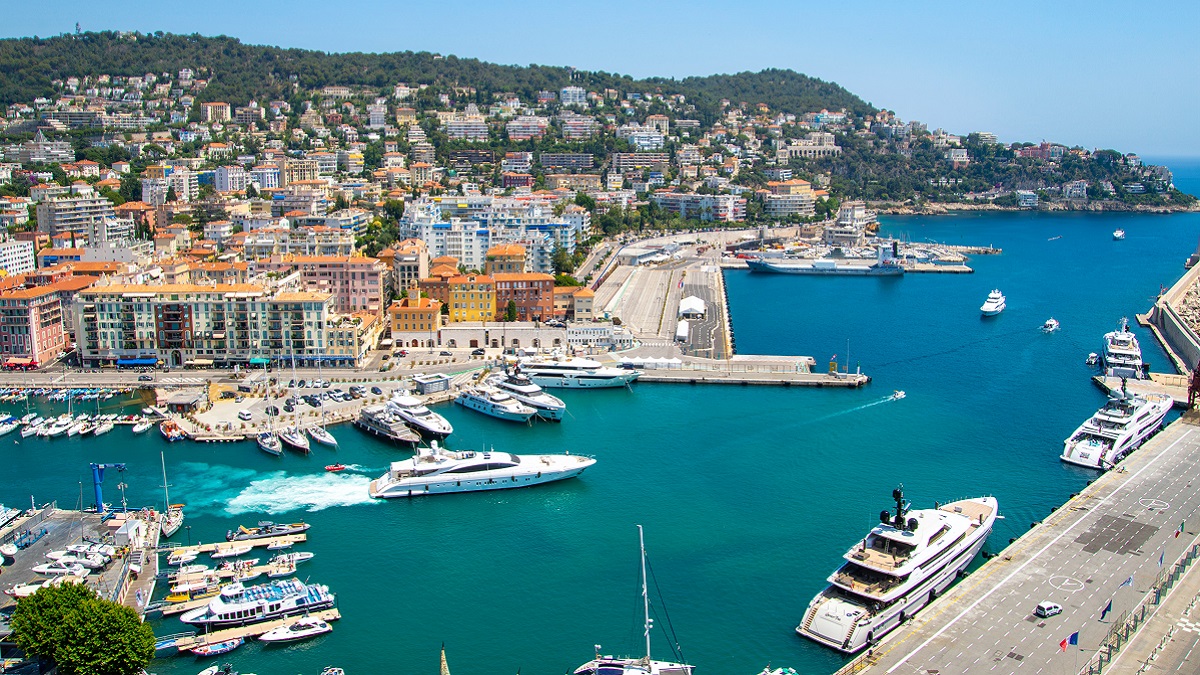
Yachts are an ultimate symbol of luxury, style, and sophistication. These sleek vessels take passengers on journeys through the seas, with all the amenities of a luxurious hotel. Yachts come in three categories- Yachts, Superyachts, and Mega Yachts- each with its own distinct characteristics and features.
Main differences between a yacht and a boat
One of the major difference between a yacht and a boat is the size. Generally, a yacht is a larger vessel that can accommodate more people and offer more space for comfortable living. On the other hand, a boat is smaller and may have limited space. Yachts usually come with luxurious amenities such as upscale furnishings, state-of-the-art equipment, and top-notch technology.
Another significant difference between yachts and boats is the purpose of use. A yacht is mostly used for pleasure cruising and traveling over long distances, while a boat is typically used for fishing, water skiing, or as a means of transport. Yachts are known to have better stability and are therefore ideal for traveling long distances and in choppy waters.
In terms of performance, yachts are designed to be faster and offer a smoother ride, thanks to their size and more powerful engines. They can travel at higher speeds for longer periods, making them suitable for longer trips. Boats are typically not as fast or efficient and may require some upgrades to increase their performance.
Features and Comfort are required to be called a Yacht
When it comes to distinguishing between boats and yachts, size is not the only determining factor. A yacht should provide a level of luxury and comfort that goes beyond basic functionality. Some of the key features that are expected in a yacht include top-of-the-line engines, advanced navigation technology, and spacious living quarters.
In terms of comfort, a yacht should be equipped with luxurious amenities such as high-end furniture, plush bedding, and state-of-the-art entertainment systems. It should also offer ample space for entertaining guests, whether that means a large sun deck for hosting cocktail parties or a spacious dining area for serving gourmet meals.
When it comes to cruising, a yacht should offer a smooth ride even in choppy waters. This requires a sturdy hull design, advanced stabilizers, and powerful engines that can propel the vessel through the water at high speeds.
In addition to these features, a yacht should also offer a high level of customization options. Owners should be able to personalize the interior design to meet their individual tastes, and there should be ample storage space for their personal belongings.
What’s the Minimum Length of a Vessel to be called a Yacht

Megayachts are the epitome of luxurious travel on the open seas, and they boast an extensive range of features and equipment that are unmatched in smaller vessels. One of the most prominent features on a megayacht is its massive size, which allows for the inclusion of multiple decks complete with swimming pools, sun loungers, and even outdoor cinemas. These yachts are also equipped with top-of-the-line entertainment systems, including state-of-the-art sound and video equipment, as well as high-speed internet connectivity. But it’s not just about the entertainment; megayachts also come equipped with facilities like helipads, submarines, and jet skis, enabling travellers to access areas that are typically inaccessible by sea. Additionally, the interior design of megayachts is simply breathtaking, featuring opulent lounges, spacious cabins, and world-class dining and cooking facilities.
Read also: Explore the World’s Most Extravagant Superyacht Swimming Pools
The Giga Yacht: is it really a thing?
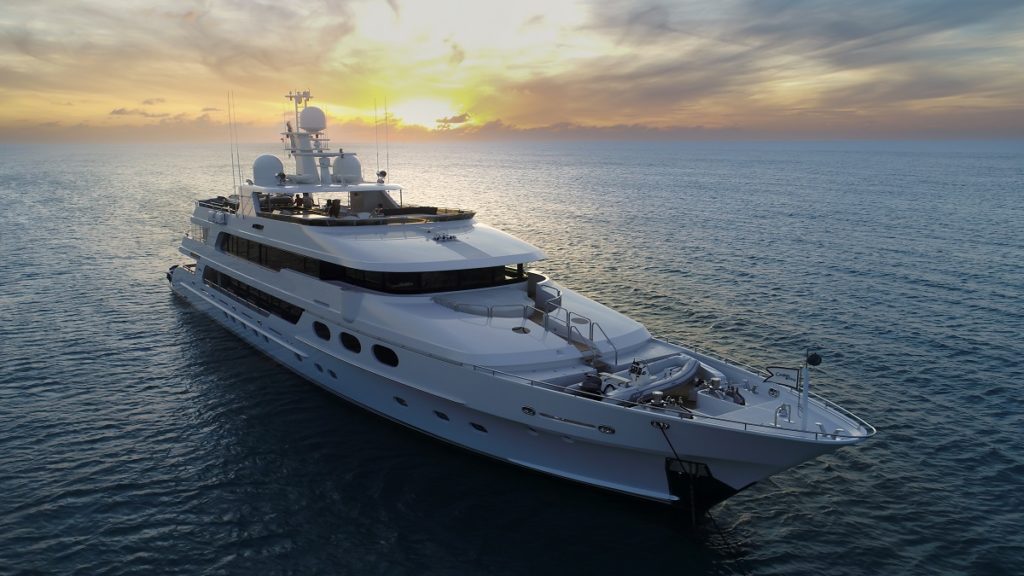
1. Sailing Yacht A – Measuring 469 feet, Sailing Yacht A is the largest sailing yacht in the world. Designed and built by Nobiskrug, this yacht boasts an innovative design featuring multiple decks, a unique glass-bottomed viewing area, and a high-tech navigation system. The yacht’s interiors, designed by Philippe Starck, are equally impressive, with multiple swimming pools, a large spa, and sophisticated lighting systems.

2. Eclipse – Owned by Russian billionaire Roman Abramovich, Eclipse is one of the largest superyachts in the world, measuring 533 feet. It boasts a sleek and modern exterior design created by Blohm + Voss. The yacht features a plethora of luxurious amenities, including a swimming pool, several hot tubs, a cinema, a gym, and even a submarine.
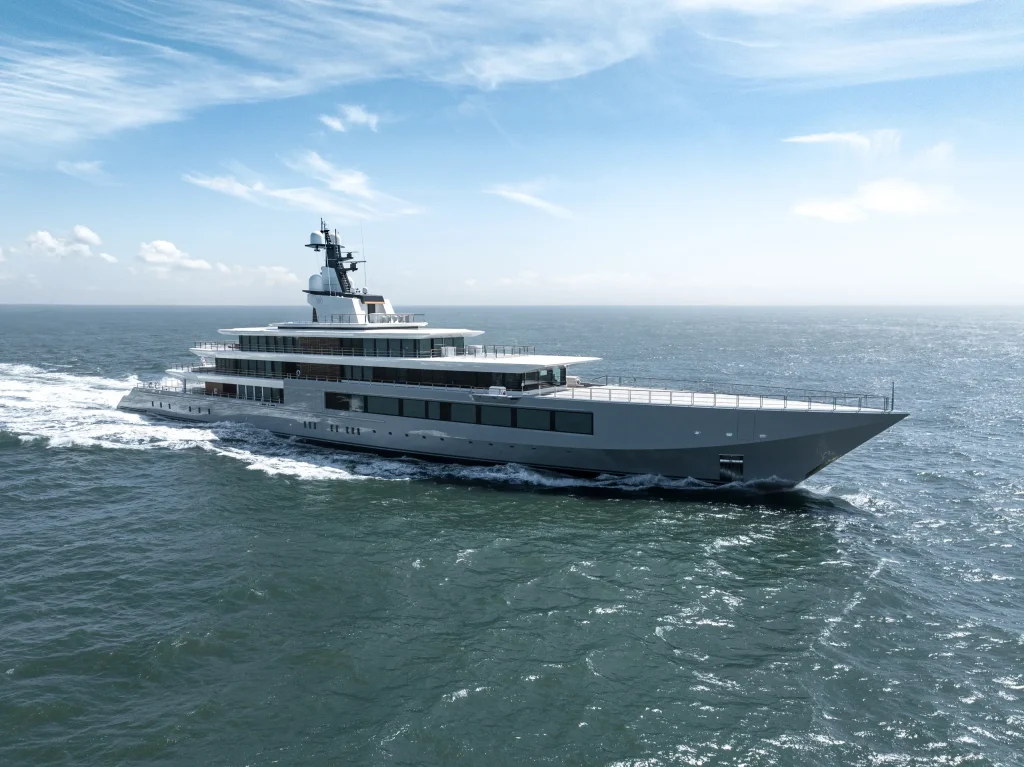
3. Seven Seas – The 282-foot-long Seven Seas, owned by billionaire Steven Spielberg, was built by Oceanco. The yacht features an understated yet elegant exterior design and luxurious interiors designed by Nuvolari Lenard. One of the unique features of Seven Seas is its infinity pool that can be transformed into a helipad.
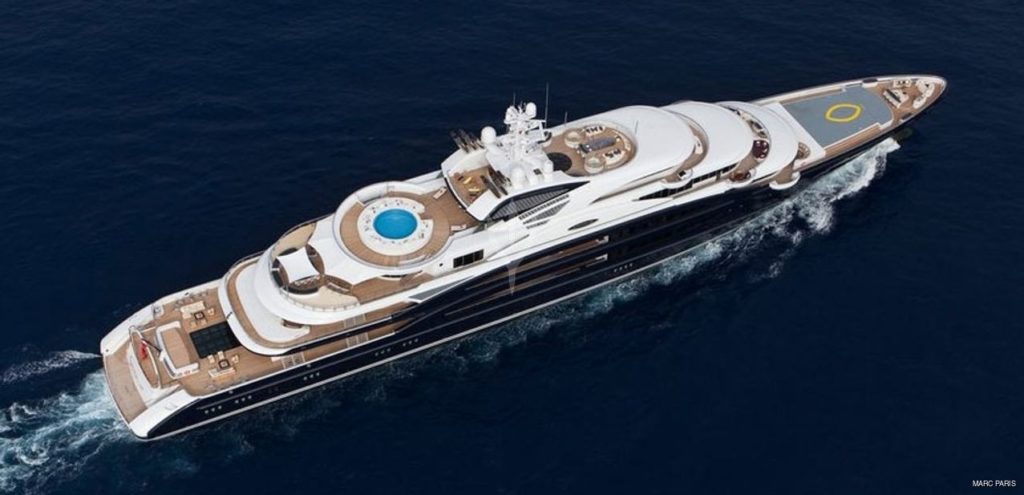
Yachts in Below Deck: All Boats of the TV Show (& their Prices!)
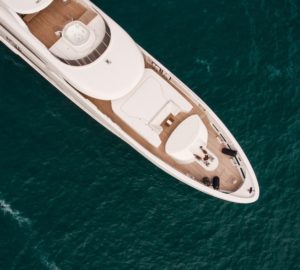
Best Yachts Under 5 Million: Yachts Available for sale
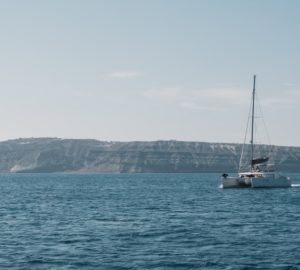

Yacht Sourcing > Yacht vs Cruise Ship: Which One is Right for You?
Yacht vs Cruise Ship: Which One is Right for You?
- June 25, 2024
When considering a luxury vacation on the water, the primary choices often come down to a yacht or a cruise ship. Both offer incredible experiences, but there are some key differences you should consider before making a decision. In this article, Yacht Sourcing will explore the main differences between a yacht vs cruise ship to help you make the best choice.

What is a Yacht?
A yacht is a private vessel that is usually smaller and more intimate compared to a cruise ship. Yachts are often used for private trips or exclusive charters, offering greater privacy and flexibility. At Yacht Sourcing, we offer a wide range of luxury yachts equipped with modern amenities and exceptional personalized services. Understanding the difference between a yacht vs cruise ship can help you decide which fits your lifestyle better.

What is a Cruise Ship?
A cruise ship is a large vessel designed to carry hundreds to thousands of passengers on long sea voyages. Cruise ships offer a variety of amenities, such as restaurants, swimming pools, entertainment, and numerous activities. They are ideal for those who want to enjoy a sailing experience with plenty of facilities and social interactions. Comparing a yacht vs cruise ship, you will find that cruise ships offer a more communal experience.
Key Differences between a Yacht and a Cruise Ship
1. Size and Capacity : Yachts are typically smaller and can accommodate fewer passengers, whereas cruise ships can carry thousands of passengers at once. When comparing a yacht vs cruise ship, size is a significant factor.
2. Privacy and Exclusivity : Yachts offer more privacy and exclusivity, ideal for private or family trips. Cruise ships are better suited for those who enjoy a social atmosphere and meeting new people.
3. Amenities and Activities : Cruise ships offer a wide range of amenities and onboard activities, while yachts provide a more personalized and flexible experience.
4. Routes and Destinations : Yachts allow you to explore more secluded and exclusive spots, whereas cruise ships have more fixed routes and often visit major ports. Considering a yacht vs cruise ship, the choice of destinations can be quite different.

Which One is Right for You?
The choice between a yacht vs cruise ship depends on your personal preferences. If you seek a more private and exclusive experience, a yacht might be the best choice. However, if you want to enjoy a variety of amenities and meet many people, a cruise ship could be the right option.
For more information about our luxury yacht options and charter services, visit the Yacht Sourcing website or contact our team, who are ready to help you plan your dream vacation on the water.
Interested about this topic? Check out other articles from Yacht Sourcing below:
- The Best Time to Visit Bali for an Unforgettable Experience
- Cruising in Elegance: Discovering the Allure of Pink Beach Indonesia with Yacht Sourcing
More Stories

INSA Yachts Festival: A Defining Triumph for Yacht Sourcing’s Legacy

10 Best Things to Do in Gili Islands

A Family Beach Trip to Raja Ampat: Ultimate Escape

Cannes Yachting Festival 2024: Everything You Need to Know

Experience the Ultimate Labuan Bajo Trip Aboard the Samboja

Top 5 Things to Check Before Buying a Used Boat to Maximize Your Used Boat Value

HEADQUARTER
Destinations
Yacht management
BUY A YACHT
CHARTER A YACHT
MANAGE YACHTS
- @[email protected]
- +62 812 3600 1024
Get an exclusive offer for yacht charter and sales, also get the latest yachts update right in your inbox!
Difference Between Yacht and Boat
• Categorized under Objects | Difference Between Yacht and Boat

English is a language that is choc full of words. In fact, English has one of the largest vocabularies of any of the world’s languages. While this makes it a rich and fascinating language, it can also make learning English somewhat confusing.
Take for instance the amount of vocabulary that we have to differentiate between marine vessels. What exactly is the difference between a yacht and a boat?
English speakers generally use the word boat to refer to a sea vessel that is reasonably small and not luxurious. The term can refer to a vessel that is motorized or not motorized and either used for work, such as in the case of a fisherman or water police, or for recreational purposes such as weekend fishing or relaxing.
A boat can either be a dinghy, row boat, fishing boat, or sailing boat and they can be quite large, but are usually more practical than luxurious.
A yacht is normally a larger and much more luxurious sea vessel than a boat. Tell the owner of a yacht that they have a boat and they are likely to take offense. Yachts are not generally used for commercial purposes, but are luxury recreational vessels. They can either be sailing yachts or power boat yachts.
There are a couple of different styles of yacht that can be differentiated: a regular yacht starts at about 34 feet, a mega yacht is more than 100 feet and a super yacht is any yacht that is longer than 200 feet.
A ship is a very large sea vessel that is generally used for commercial purposes such as shipping cargo between ports around the world or a cruise ship or passenger ship for transporting people.
There is a lot of different vocabulary used to describe different types of sea going vessels, but if you understand the essential differences between a boat, ship and yacht then you are unlikely to make many errors. Boat tends to be a broader term for sea vessels than yachts, which are more specifically used as a luxury pastime.
Summary: 1.Boats can be used for commercial or recreational purposes 2.Yachts are generally only recreational 3.Boats are generally small 4.Yachts can be any size up to more than 200 feet long 5.Ships are large sea vessels used for commercial purposes 6.Boats and yachts can either be motorized or not motorized
- Recent Posts
- Difference Between Governor and Senator - November 14, 2009
- Difference Between Immigration and Migration - November 14, 2009
- Difference Between Who and Whom - November 13, 2009
Sharing is caring!
Search DifferenceBetween.net :
- Difference Between Boats and Ships
- Difference Between Port and Harbor
- Difference Between Aluminum and Fiberglass Boats
- Difference Between MPH and Knot
- Difference Between Inboard and Outboard Motors
Cite APA 7 , R. (2009, November 3). Difference Between Yacht and Boat. Difference Between Similar Terms and Objects. http://www.differencebetween.net/object/difference-between-yacht-and-boat/. MLA 8 , Rachel. "Difference Between Yacht and Boat." Difference Between Similar Terms and Objects, 3 November, 2009, http://www.differencebetween.net/object/difference-between-yacht-and-boat/.
US Coast Guard conciders a vessel over 26′ with a cabin to be a yacht.
All Boats for privat sporting are named “YACHT”. For me is a Yacht a sportboat with a closed cabin on board. per exemple : A safeboat on a liner is more long than 34 Feet but it is always a “BOAT” because its a public and commercial thing. A “Yacht” is a privat and luxury sportboat for a privat person !
Leave a Response
Name ( required )
Email ( required )
Please note: comment moderation is enabled and may delay your comment. There is no need to resubmit your comment.
Notify me of followup comments via e-mail
Written by : Rachel. and updated on 2009, November 3 Articles on DifferenceBetween.net are general information, and are not intended to substitute for professional advice. The information is "AS IS", "WITH ALL FAULTS". User assumes all risk of use, damage, or injury. You agree that we have no liability for any damages.
Advertisments
More in 'objects'.
- Difference Between Running Shoes and Walking Shoes
- Difference Between Club Soda And Tonic Water
- Difference Between CNG And LPG
- Difference Between Classical and Acoustic Guitar
- Difference Between Cat5e and Cat6
Top Difference Betweens
Get new comparisons in your inbox:, most emailed comparisons, editor's picks.
- Difference Between MAC and IP Address
- Difference Between Platinum and White Gold
- Difference Between Civil and Criminal Law
- Difference Between GRE and GMAT
- Difference Between Immigrants and Refugees
- Difference Between DNS and DHCP
- Difference Between Computer Engineering and Computer Science
- Difference Between Men and Women
- Difference Between Book value and Market value
- Difference Between Red and White wine
- Difference Between Depreciation and Amortization
- Difference Between Bank and Credit Union
- Difference Between White Eggs and Brown Eggs

Yacht vs Cruise Ship: Key Differences Explained
Many travelers look at luxury yacht rentals and cruise ships when planning a vacation at sea. But there are some major distinctions between these two options. Understanding the key differences can help you choose the best one to suit your needs and expectations.
Size and Capacity
The most obvious difference is size and guest capacity. Cruise ships are massive, housing 2000-6000 passengers.
Even small ships carry 600+ people. In contrast, chartered yachts max out around 12 guests, with typical capacities of 6-10. The intimate scale ensures an exclusive escape.
Itineraries and Flexibility
Cruises sail along fixed routes and strict schedules, whereas yacht charters offer total itinerary flexibility. Craft your own custom route with a captain. Spend more time in spots you love and bypass others. The only fixed elements are your start/end ports.
Onboard Experience
The onboard ambiance varies dramatically between the two. Cruise ships feel like floating cities with crowds everywhere. You’ll share amenities with thousands of fellow passengers. Chartered yachts provide a private, peaceful retreat catered to you. No queues or sharing.
Activities and Entertainment
Both offer plenty of amenities, but the vibe is different. Cruises offer fun activities like casinos and shows, while yachts provide relaxation and adventures like snorkeling and fishing. The choice depends on your interests.
Service and Cuisine
With thousands of guests, cruise staff and dining cannot provide truly personalized service. You get more staff interaction on a yacht, including a captain dedicated to your charter. Included in the experience is fine dining with customized menus and premium alcohol.
For an exclusive getaway on your terms, a private yacht charter reigns supreme. But mass market cruises suit travelers who enjoy crowds and scripted entertainment. Evaluate your priorities to choose the best seafaring vacation.
Booking and Costs
Booking a cruise is relatively simple through major cruise lines or agencies, while yacht charters require researching reputable brokers and charter companies, of which there are many. Cruise fares per person are lower, but a fully crewed yacht divided among guests can still be competitive. Keep costs variable by booking a bareboat yacht charter.
Destinations and Departure Ports
Cruise ships certainly provide a wide variety of itineraries, but their large size limits them to major cruise ports. Yachts can access small coves, secluded islands, and exotic locales that mega-ships can’t reach. Many more departure ports are accessible for yacht charters too.
Onboard Accommodations
Staterooms on a cruise provide basic comfort, often with an ocean view. Yachts feature lavish staterooms and master suites with hotel-style amenities. You’ll get complete privacy, often with en-suite bathrooms. Some large charter yachts rival small boutique hotels in luxury. .
Health and Safety
Mass gatherings on cruises can enable the rapid spread of illnesses like COVID or norovirus. Yachts provide isolation from crowds and allow immunocompromised guests to vacation safely. Strict protocols keep private yachts disinfected, and both options mandate safety drills and procedures.

Read Our Billfish Policy

Our Crews Prefer

- Inquire Now
- YACHT SEARCH
- Motor Yachts
- Sailing Yachts
- $1 – $25,000 Yachts
- $26,000 – $50,000 Yachts
- $50,000 – $100,000 Yachts
- $101,000 – $200,000 Yachts
- $200,000 – ∞ Yachts
- Virgin Islands
- Leeward Islands
- Turks and Caicos
- Spain & Balearic Islands
- New England
- Tahiti & South Pacific
- More destinations
- Charter Advice
Yacht Charter vs Cruise Ship
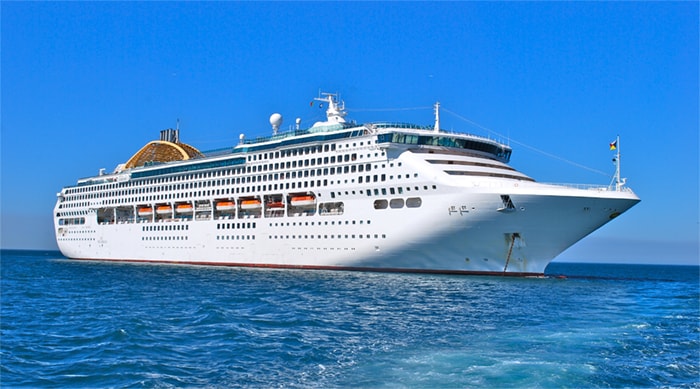
Yacht Charters vs. Cruises: What’s the Difference?
A vacation at sea seems like the ultimate escape. Guests get to explore beautiful coastal destinations aboard a sailing yacht, catamaran or cruise ship and enjoy the open ocean.
When it comes to a seafaring holiday, travelers have two options: A cruise ship vs. a yacht charter.
Although these types of vacations share some similarities, they couldn’t be more different. Whereas cruises have set itineraries and serve groups of more than 3,000 guests, luxury yacht charters offer a more intimate and personalized experience. Yacht charter guests, for example, receive unparalleled service, amazing chef-prepared cuisine, they can plan completely customizable itineraries, and they have access to more exclusive ports in the world’s top luxury destinations.
Bottom line: If you want to explore beaches, islands and port towns around the world, consider a private yacht charter and enjoy an experience you won’t soon forget.
Here are some of the key differences between cruises and yacht charters:
- Explore More
Due to their size, cruise ships must stop in larger and deeper ports. For example, in the Virgin Islands , cruise ships can only access the largest ports like Charlotte Amalie (USVI) and Tortola (BVI). Therefore, cruise guests miss out on the smaller, more exclusive islands and destinations in those areas like Jost Van Dyke and Virgin Gorda.
Private charter yachts, though, don’t require such large ports, and therefore, yacht charters can go to smaller islands, hidden beaches, secluded anchorages, and dive spots away from the cruise ship crowds. Not to mention, larger charter yachts typically have a tender onboard, and therefore, guests can motor up to virtually any beach or cove.
- Enjoy the Ultimate in Privacy
The majority of cruise ships accommodate more than 3,000 passengers. These guests all share the same amenities and dining room spaces, and as such, a cruise tends to feel crowded.
Yacht charters, though, are much more intimate. Just you and your guests are sharing the yacht (along with your dedicated crew). Therefore, you can spread out and relax, and avoid the crowds and lines you’d likely experience on a cruise.
Due to the crowds and shared activity and dining spaces, cruise ships are notorious for spreading germs and viruses. That’s a real concern for travelers, especially with the world’s new COVID-19 realities. Not to mention, social distancing is all but impossible on a cruise.
Charter yachts offer a much safer experience. For example, charter yachts are cleaned and disinfected before and during each charter, helping to limit the spread of disease. You can plan your vacation to be fully social-distanced – i.e. arriving on a private flight, avoiding crowded restaurants and ports, etc. And because you control the guest list, you know your fellow passengers won’t be spreading disease.
- Itinerary Flexibility & Customization
On a cruise ship, the itinerary and your onboard activities are typically set in stone. As such, you might have to miss out an activity or port of call that you had wanted to experience.
Yacht charter guests have much more freedom. Guests can control virtually any aspect of a yacht charter, including:
- Itineraries – Pick what you see and where you stay
- Menus – Help your chef plan the menu to your tastes
- Shore Excursions – Explore the places you’d like when in port
- Daily Schedule – Design your days to best suit your tastes, e.g. meal times, activities, etc.
- Exceptional Service
Yacht charters deliver a truly 5-star experience. Aboard a yacht, you’ll be served by a dedicated crew. In fact, most crewed yachts have a crew-to-guest ratio of one-to-one. That means you’ll always have a stewardess to top off your drinks, help you plan shoreside excursions, and provide top-notch meal service.
You’ll also have access to a deck crew that can help you plan and set up water sports, tender excursions, and beach picnics.
- Amazing Food & Drink
Charter guests are served by an onboard chef, who will design menus to meet your exacting preferences. In fact, prior to embarking, guests provide the chef with their food and beverage preferences. The chef then uses this information to develop menus that meet the guests’ preferences to a T. Available food and drink options include: tasting menus, pairings, themed dinners, birthday celebrations and more.
- More Activities and Water Sports
On cruises, the shore excursions are limited. One reason is time. You might only have a few hours in port, before you’re required to be back onboard. Another reason is the size the cruise ship. You won’t have access to the water, like you do onboard a charter yacht.
Charters provide guests with an amazing list of activities to enjoy. In fact, most charter yachts have an array of water sports toys and equipment for guests to enjoy, including jet skis, tenders, snorkel and scuba gear, and water slides. Another benefit: Charter guests have much more freedom to plan shoreside activities.
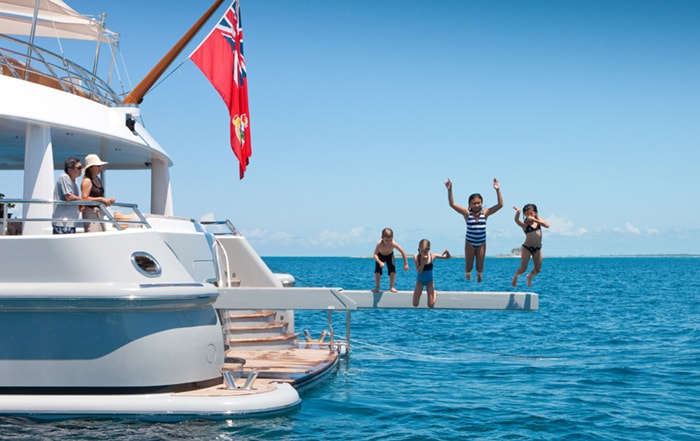
Ready to Plan Your Luxury Yacht Charter Vacation?
When it comes to vacations at sea, a yacht charter offers the best in privacy, customization, and service. Considering a yacht charter? Contact a broker with Worldwide Boat.
We provide yacht charters of all types in some of the world’s top yachting destinations including the Caribbean, the West Mediterranean, New England, and Greece. Let us help you plan a luxury yacht charter today.
Showing 1–4 of 288 results
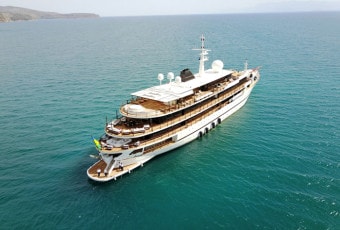
282.2ft / 84m
278.1ft / 83m
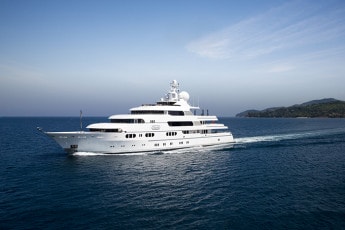
239.6ft / 71m
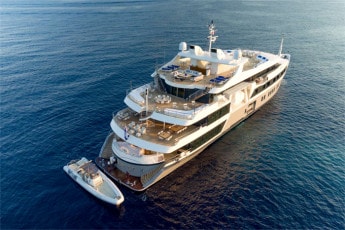
Serenity 236
236.3ft / 70m
Set your search criteria to find the perfect yacht
- Alaska Australia Bahamas BVI Caribbean Croatia Florida France Galapagos Greece Indonesia Italy Malaysia Maldives Mexico Mediterranean New England Norway Spain Thailand Tahiti Turkey
- Motor Yacht Catamaran Sailing Boats
- 2 4 6 8 10 12 12+
Search by yacht name
How is the sinking of Mike Lynch's Bayesian superyacht being investigated?
As divers recover the seventh and final body from the wreckage, questions are now turning to how the tragedy could have happened.
By Claire Gilbody Dickerson, news reporter
Friday 23 August 2024 12:46, UK
Please use Chrome browser for a more accessible video player

Italian authorities are leading the investigation into the sinking of the Bayesian superyacht, which has left seven people dead.
The body of British tech tycoon Mike Lynch was among those recovered from the shipwreck, off the coast of Sicily, this week. His 18-year-old daughter Hannah is believed to be the final body divers pulled from the wreckage on Friday.
Of the 22 people on board the Bayesian, 15 survived.
Here we look at how the disaster is being investigated.
Follow latest: Tributes pour in for Mike Lynch and his daughter

Who is investigating the sinking?
A criminal investigation was opened immediately after the tragedy, despite the fact no suspects have been identified publicly.
Investigators from the public prosecutor's office in the Sicilian town of Termini Imerese are collecting evidence for that investigation.
The UK's Marine Accident Investigation Branch (MAIB) has deployed a team of four inspectors to Italy to conduct a preliminary assessment.
It is understood they will look at all relevant aspects of the sinking, including the design, stability, and operation of the vessel. They will also examine the effects of the weather conditions experienced.
The MAIB does not look to establish blame or liability but seeks to discover the causes of accidents at sea and prevent similar incidents in future.

Witnesses to face 'methodical' questioning
The case is likely to carry on for months.
Investigators will take their time, speaking to survivors and eyewitnesses, as well as examining physical evidence.
They have already started to question witnesses, including the vessel's captain James Cutfield.
Obtaining witness testimony as soon as possible will be key for the authorities investigating the disaster, according to experts.
James Wilkes, a marine investigator, told Sky News those examining the sinking will want to speak to those who survived or saw what happened "while the memories are fresh in their mind".
"I'd like to explore the circumstances in which they were able to survive the storm and the sinking, to look at the anomalies and work out the difference between those and the people that sadly didn't survive, and combine it all with technical data and simulation."
Mr Wilkes added investigators must work through evidence "methodically and meticulously".
Read more: Who was on superyacht that sank off Sicily? What we know about disaster - and 'alarming' potential cause

Keep up with all the latest news from the UK and around the world by following Sky News
Will the shipwreck form part of the investigation?
Questions have been raised about whether the sunken yacht will be salvaged during the investigation.
The Italian coastguard has said a decision on whether to raise the vessel from the seabed was "not a topic on the agenda" at the moment - but "will be" in the future.
Nick Barke, head of salvage operations at Boats.co.uk, a boat sales and services company, said the "only real way of knowing" why the yacht sank would be to lift it to the surface.
The Bayesian had an extractable keel (an underwater fin) that was almost 10 metres in length when extended and acted as a counterbalance for the vessel.
Its final position will be crucial for investigators to discover.
If it was stowed when the storm hit, it would have made the yacht much less stable.
"That is a key fact that needs to be established," Matthew Schnack, chairman of the Maritime Search and Rescue Council, told Sky News.
"That keel in effect will lower the centre of gravity of the vessel and make it more stable.
"And if that keel was lifted up, it could have had significant impact on the vessel's ability to stay upright when the storm hit."
Investigators are also likely to look at whether any openings - such as windows and doors - were open on the vessel, which could have allowed it to fill with water more quickly, as well as the impact of the 72m mast - the second tallest in the world.

Be the first to get Breaking News
Install the Sky News app for free

Questions raised about human error
The chief executive of a firm which makes and sells yachts like the Bayesian believes the sinking may have been due to a series of human mistakes.
Giovanni Constantino, CEO of the Italian Sea Group, told Sky News the storm on Monday had been expected .
Mr Costantino asked: "Why was the ship in that situation? The storm was readable… We must ask ourselves why none of the fishermen in the port of Porticello went out at sea that night? Why did no one go out to sea?
"Everyone knew about the storm. And then, if a fisherman knew, why the commander of a ship of such importance, with guests of such level and importance, with 12 guests on board... Why wasn't he in an alert situation?"
Mr Constantino had earlier told Sky News there were no flaws with the design and construction of the Bayesian and vessels like the stricken superyacht were "unsinkable".
The chief executive has also been pushing the same message to Italian media outlets.
"A Perini boat survived the Category 5 Katrina hurricane. Do you think one couldn't survive a waterspout here?" he told the Corriere della Sera newspaper, referring to a type of tornado which is believed to have hit the Bayesian.
But as well as the possibility of human mistakes, investigators will also look at whether the yacht was technically sound, and how rare the tornado weather event was which led to the sinking.
Related Topics
- Superyacht sinking

COMMENTS
Learn how size, propulsion, classification and waters of operation distinguish yachts from boats. Find out the origin, history and types of yachts, and see examples of different classes and sizes.
Learn the definitions and differences between boat, ship and yacht, and how they relate to size, luxury, recreation, and navigation. A yacht is a fancy boat, a ship is a very large boat, and a boat can be any small vessel on water.
Learn the key differences between yachts and ships in terms of purpose, size, ownership, crew, design, and experience. See comparison chart, definitions, and examples of both terms.
A yacht is a recreational vessel, while a ship has a specific function such as warfare or commerce. Learn the difference between ship and yacht with examples of superyachts, cruise ships and terayachts.
Learn how to distinguish between boats, yachts and ships based on size, price, use and propulsion. See a table with the main characteristics and examples of each type of watercraft.
Ship vs Boat vs Yacht. In terms of size, boats are the smallest, followed by yachts, and then ships, which are the largest of the three. Boats are typically used for personal or recreational purposes, while ships are primarily employed for commercial or transportation activities. Yachts, on the other hand, cater to the luxurious and leisurely ...
It also refers to a tender to a bigger boat or yacht. "Ship" is a large commercial boat, often used for distance travel and transport of goods or passengers - cruise ship, container ship, etc. "Yacht" is typically a larger boat with luxury amenities used as a recreational vessel— motor yacht, sailing yacht. "Superyacht" is a ...
A boat becomes a "ship" often once it's reached a specific size, which tends to be on the bigger side and suitable for sea travel. In most cases, ships serve as working vessels, such as transport or cruise liners. "Yachts" are also more substantial, but they're solely recreational vessels and often used for luxury purposes.
Typically, boats are smaller vessels that can be operated by just one or two people, while larger yachts require a full crew to operate safely. Depending on the size of the yacht, the crew may include a captain, officer (s), engineer (s), chef (s), steward (s), deck crew, and other specialized personnel.
6 Differences Between Yachts and Boats. 1. Size. The first key difference between a boat and a yacht is their size. A yacht is typically bigger than a boat and whilst there is no strict definition of what a yacht is, the general consensus is that if it is over 40 feet in length, it is usually considered a yacht.
A boat is often expected to be smaller than a ship or a yacht. Generally, a vessel anywhere from 15-30 feet in length will be called a boat. Starting from 15 meters (50 feet), private luxury recreational crafts can be considered yachts. Starting from 24 meters (79 feet), you are entering the superyachts area. Azzam Yacht, 590 ft.
In casual use, the word boat is often used to refer to any watergoing vessel, regardless of its size or how it's powered. However, large oceanfaring watercraft—those that use multiple sails or engines—are more properly called ships. In contrast, the word ship isn't commonly applied to smaller craft. The word yacht is typically used to ...
The difference between a ship and a boat is always a hot topic of discussion among people. Mentioned herein are seven main aspects which help to differentiate between a ship and a boat. ... When I queried sailing yachts that had berths under part of the deck, it was modified to the deck on a yacht is as much structural as deck, but if a vessel ...
For those who are new to sea life, it's okay to not understand the difference. There are still some sea lovers who couldn't tell you the difference between yachts and superyachts, between boats and ships. And some may say it doesn't even matter. Some distinctions are clear, like the difference between a ship and schooner.
Yachts are typically larger than boats, often measuring over 40 feet long. While boats come in various sizes, they often range from around 20-30 feet in length. Boats are usually smaller and built for leisurely activities like fishing or cruising on lakes and rivers.
The main difference between a ship and a boat is their size. A ship is typically larger than a boat and can carry more cargo and passengers. Ships are also designed for longer journeys and can travel across oceans. Boats, on the other hand, are smaller and are generally used for shorter trips, such as fishing or pleasure boating.
A ship and a yacht are both waterborne vessels, but they serve distinctly different purposes and have varied features. Ships are generally built and designed for cargo transportation, passenger transport, or specialized tasks in the deep waters. On the other hand, yachts are more oriented towards personal or recreational use, with an emphasis ...
In conclusion, the difference between Yachts, Superyachts and Mega Yachts lies mainly in their size, luxury and amenities. While a Yacht can range from 56 to 90 feet, a Superyacht can measure over 100 feet and offer features such as multiple decks, swimming pools and helipads. A Mega Yacht, on the other hand, is the ultimate in luxury, with a ...
Key Differences between a Yacht and a Cruise Ship. 1. Size and Capacity: Yachts are typically smaller and can accommodate fewer passengers, whereas cruise ships can carry thousands of passengers at once. When comparing a yacht vs cruise ship, size is a significant factor. 2.
1.Boats can be used for commercial or recreational purposes. 2.Yachts are generally only recreational. 3.Boats are generally small. 4.Yachts can be any size up to more than 200 feet long. 5.Ships are large sea vessels used for commercial purposes. 6.Boats and yachts can either be motorized or not motorized. Author.
The most obvious difference is size and guest capacity. Cruise ships are massive, housing 2000-6000 passengers. Even small ships carry 600+ people. In contrast, chartered yachts max out around 12 guests, with typical capacities of 6-10. The intimate scale ensures an exclusive escape.
Yacht: its a scope not a specific size. It's a ship made fast and luxurious, for private use. For example you don't have a yacht for passengers. Otherwise it's a luxury cruise ship or a luxury ferry boat. Yacht is intended for personal use of the owner, not commercial operations. Boat/ship There's a yt video about it.
Here are some of the key differences between cruises and yacht charters: Due to their size, cruise ships must stop in larger and deeper ports. For example, in the Virgin Islands, cruise ships can only access the largest ports like Charlotte Amalie (USVI) and Tortola (BVI).
Nick Barke, head of salvage operations at Boats.co.uk, a boat sales and services company, said the "only real way of knowing" why the yacht sank would be to lift it to the surface.
The body of a man recovered near the Bayesian yacht is believed to be that of Recaldo Thomas, a Canadian-Antiguan chef who was working on the boat Six people are still missing after British luxury ...
The coast guard reported the yacht was struck by a tornado, and a waterspout was reported to the European Severe Weather Database around the same time. Storms that day resulted in at least two ...